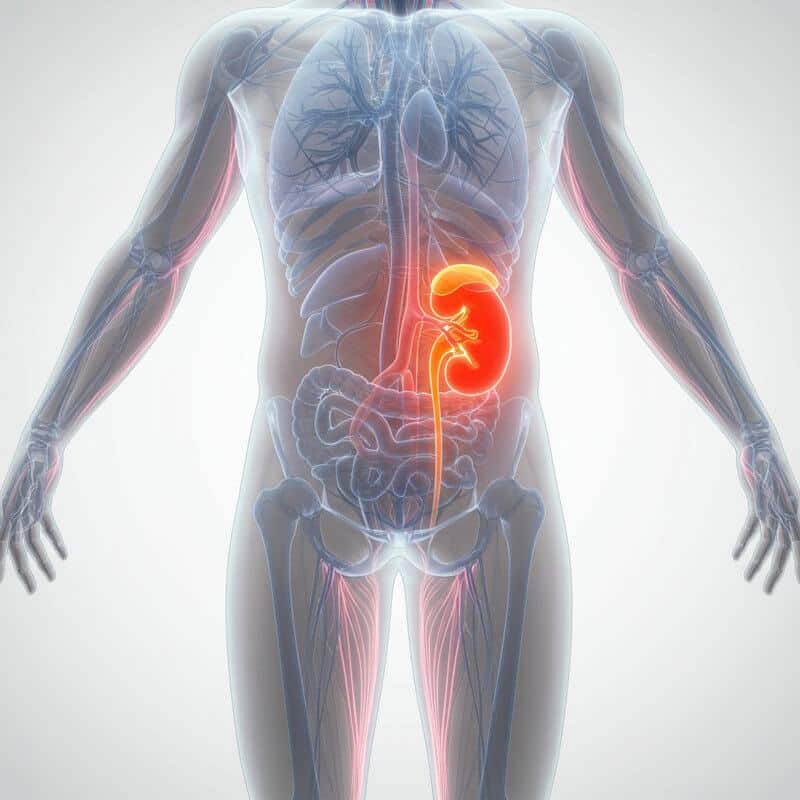Say Goodbye to Under-Eye Bags with These Simple Remedies
Under-eye bags affect nearly 30% of adults, according to a 2022 survey by the American Academy of Dermatology (source). These visible puffy areas are closely linked to the health of the skin and the lymphatic system, which manages fluid balance and waste removal. Early identification and proper management are challenging, as symptoms may be subtle at first and influenced by multiple factors. Increased awareness and access to effective remedies are essential for those seeking to address this common cosmetic concern.
1. Cold Compresses
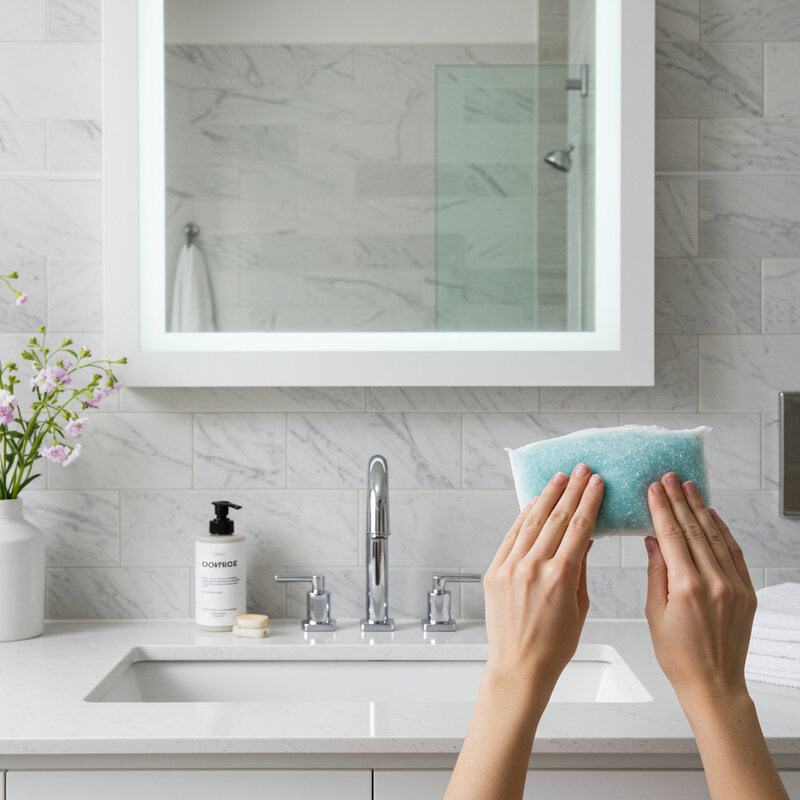
Applying a cold compress is one of the most effective and immediate remedies for under-eye bags. The science behind this method lies in vasoconstriction, where cold temperatures cause blood vessels to narrow, thereby reducing swelling and inflammation. This principle is also widely used in treating bruises and minor injuries, as it helps minimize fluid accumulation and speeds up recovery (Harvard Health).
To safely use a cold compress, wrap ice cubes or a chilled gel pack in a soft cloth to avoid direct contact with the delicate under-eye skin. Gently press the compress against the area for 10-15 minutes. Avoid using extreme cold directly on the skin, as this can cause irritation or even mild frostbite. For a more soothing experience, chilled cucumber slices or refrigerated teaspoons can also be effective alternatives.
Consistency is key—using cold compresses once or twice a day can help manage puffiness and provide visible results. Always monitor your skin’s reaction, and discontinue use if you notice redness or discomfort. For more tips, visit the American Academy of Dermatology guide.
2. Elevation During Sleep

Elevating your head while sleeping is a simple yet powerful strategy to reduce under-eye bags. Gravity naturally encourages fluid to accumulate in the soft tissues around the eyes during the night, especially when lying flat. By raising your head, you promote lymphatic drainage and decrease morning puffiness. Research from the Cleveland Clinic supports the use of head elevation as a non-invasive way to improve facial swelling and under-eye bags (source).
Sleeping positions play a significant role in fluid retention. Sleeping on your back with your head elevated is ideal, as it keeps fluids from settling around the eyes. In contrast, sleeping on your stomach or side may worsen puffiness due to increased pressure and gravitational pooling.
Choosing the right pillow is essential. Opt for a firm, supportive pillow that maintains a gentle incline of your head and neck. Some individuals benefit from using two stacked pillows or a specially designed wedge pillow for added elevation. Ensure your pillow choice keeps your spine aligned to avoid discomfort or neck pain. For more information on optimizing your sleeping posture, visit the Sleep Foundation.
3. Hydration

Proper hydration is a cornerstone of healthy, resilient skin and a key factor in minimizing under-eye bags. When the body is well-hydrated, skin cells retain their structure and elasticity, which helps prevent puffiness and sagging. Conversely, dehydration can lead to dull, sunken skin and emphasize the appearance of bags under the eyes, as the body compensates by retaining water in certain areas, including the delicate periorbital region (Healthline).
Drinking sufficient water throughout the day supports the natural detoxification processes and optimal function of the lymphatic system, both of which help prevent fluid buildup around the eyes. The Centers for Disease Control and Prevention (CDC) recommends a daily intake of about 2.7 liters (91 ounces) for women and 3.7 liters (125 ounces) for men from all beverages and foods combined. However, individual needs may vary based on activity level, climate, and health status.
Practical tips include carrying a reusable water bottle, tracking your intake, and consuming hydrating foods like cucumbers, watermelon, and leafy greens. Aim to spread fluid intake evenly throughout the day to maintain consistent hydration and support healthy skin.
4. Reduce Salt Intake
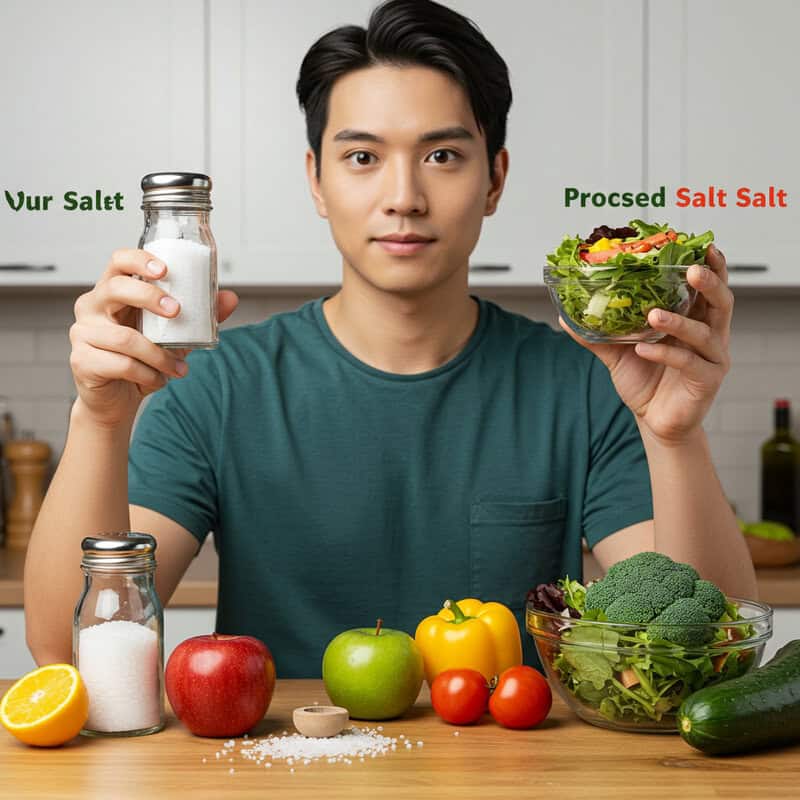
Excessive sodium consumption is a well-known contributor to fluid retention, which can manifest as puffiness and swelling under the eyes. Sodium causes the body to retain water, particularly in tissues with loose connective structures, such as the delicate area beneath the eyes. Studies published by the American Heart Association confirm that individuals with high-salt diets are more likely to experience noticeable swelling and under-eye bags than those who limit their sodium intake.
Comparing high- and low-salt diets reveals marked differences in facial puffiness and general water retention. Diets rich in processed foods, canned soups, fast food, and salty snacks significantly increase sodium levels, exacerbating under-eye swelling. On the other hand, a balanced diet focused on whole foods and minimal added salt can reduce fluid accumulation and improve skin appearance.
To manage sodium intake, avoid or minimize processed meats, canned vegetables, pickled foods, restaurant meals, and packaged snacks, all of which are common sources of hidden salt (CDC). Instead, opt for fresh produce, herbs, and homemade meals with controlled seasoning to support optimal fluid balance and reduce under-eye puffiness.
5. Use Caffeine-Infused Products
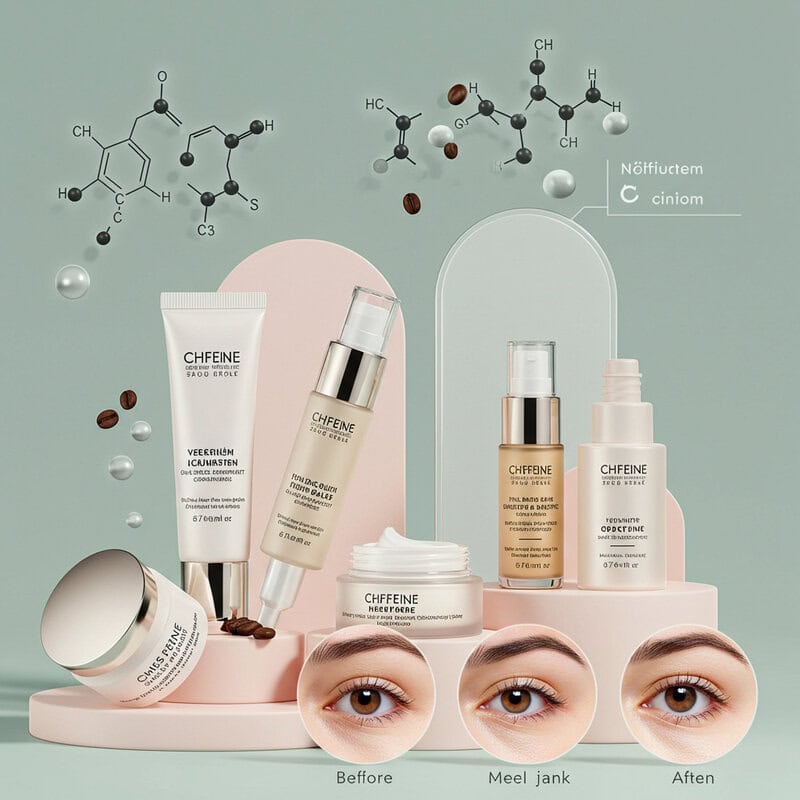
Caffeine is a popular ingredient in skincare due to its remarkable vasoconstrictive properties, which help reduce skin puffiness by narrowing blood vessels and minimizing fluid leakage in the under-eye area. When applied topically, caffeine can temporarily tighten skin and diminish the appearance of under-eye bags, making it a sought-after remedy in eye creams and serums (National Institutes of Health).
Topical application of caffeine differs significantly from oral consumption. While drinking caffeinated beverages may have mild diuretic effects, it does not directly target under-eye puffiness. In contrast, topical products deliver caffeine directly to the skin’s surface, allowing for localized action and more noticeable results. Studies suggest that consistent use of caffeine-infused creams can lead to visible improvement in periorbital swelling and skin texture.
When selecting a caffeine-based product, look for reputable brands that list caffeine among the primary active ingredients. Consider additional soothing or hydrating elements, such as hyaluronic acid or green tea extract, which enhance the product’s effectiveness. For more on ingredients and product recommendations, visit the Dermatology Times.
6. Gentle Facial Massage
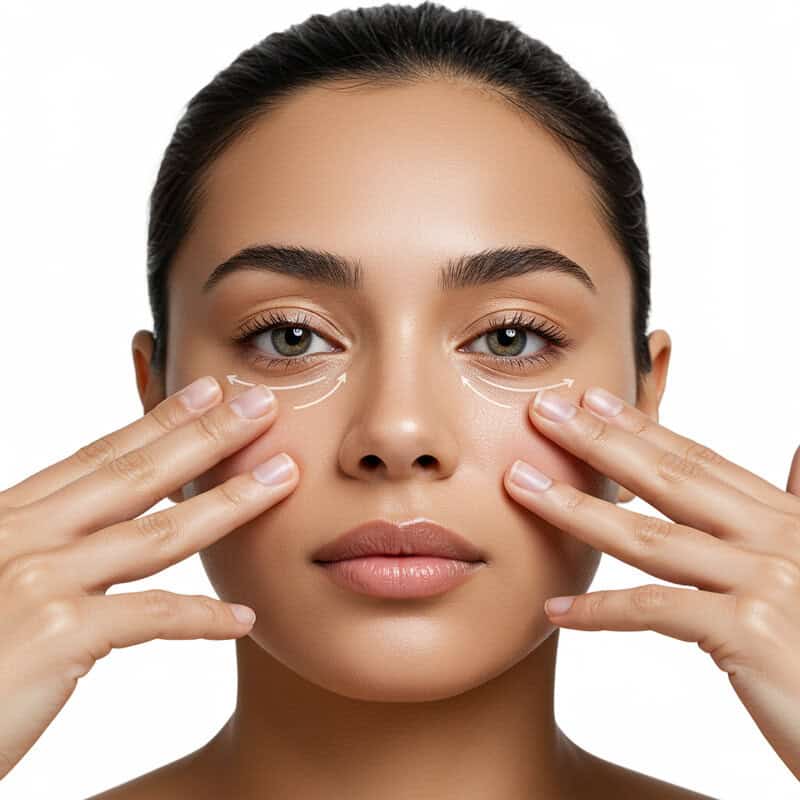
Gentle facial massage is an effective method for reducing under-eye bags by stimulating lymphatic drainage. The lymphatic system plays a crucial role in removing excess fluid and toxins from tissues, and targeted massage can help move stagnant lymph away from the delicate under-eye area, thereby decreasing puffiness (Healthline).
Manual massage involves using the fingertips to apply light pressure in slow, circular or sweeping motions from the inner to the outer corners of the eyes. This technique encourages the flow of lymph away from the under-eye region and can be easily performed at home. Tool-based techniques, such as using a jade roller or a gua sha stone, offer a similar effect while providing a cooling sensation that further reduces swelling. These tools should be used with care, applying gentle pressure and following the natural contours of the face.
For a safe routine, cleanse your hands and face, apply a hydrating serum or eye cream to reduce friction, and use soft, upward strokes for two to three minutes daily. Avoid pressing too hard to prevent irritation or bruising. For more guidance, refer to the American Academy of Dermatology’s tips on facial massage.
7. Sleep Hygiene
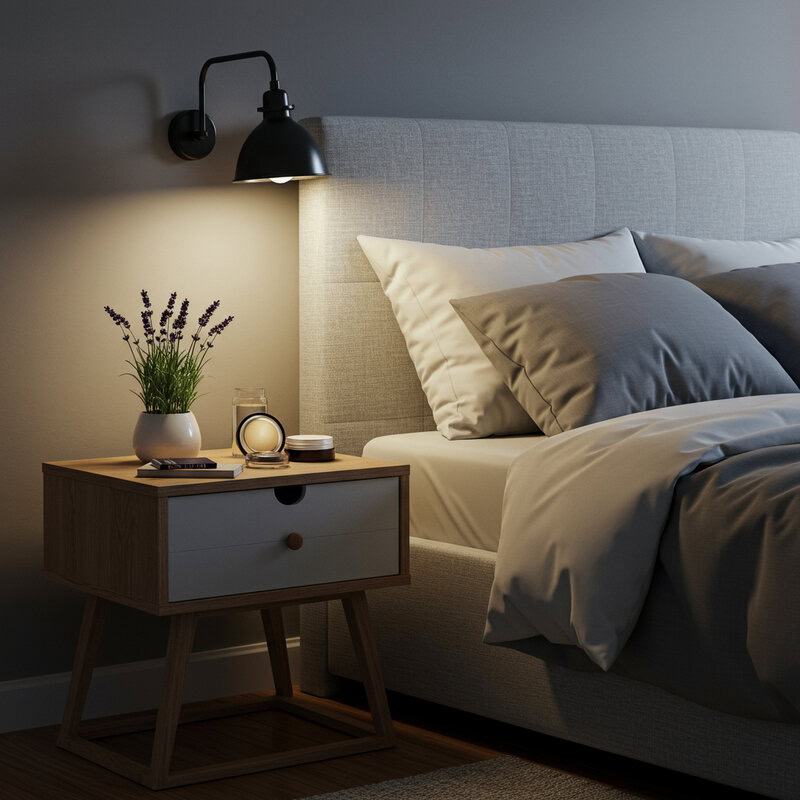
Quality sleep is directly linked to the appearance of the under-eye area, with poor sleep often resulting in increased puffiness and prominent bags. Inadequate or irregular sleep disrupts the body’s natural processes for repair and fluid balance, leading to visible swelling around the eyes. Research from the Sleep Foundation demonstrates that sleep deprivation causes blood vessels under the eyes to dilate and fluid to accumulate, exacerbating under-eye bags.
Comparing different sleep durations, studies have found that adults who consistently get less than seven hours of sleep per night are more prone to eye puffiness and skin discoloration than those who achieve the recommended 7-9 hours. Extended and uninterrupted rest enables the lymphatic system to function efficiently, reducing fluid buildup and supporting skin health.
To promote healthy sleep hygiene, establish a regular bedtime routine: avoid screens for at least an hour before bed, maintain a cool and dark environment, and limit caffeine or heavy meals in the evening. Incorporating relaxation techniques, such as deep breathing or gentle stretching, can also enhance sleep quality. For further guidance, visit the Centers for Disease Control and Prevention’s sleep hygiene guide.
8. Allergy Management

Allergies are a common but often overlooked cause of under-eye bags, as allergic reactions frequently trigger inflammation and swelling in the delicate tissues around the eyes. When exposed to allergens such as pollen, dust, or pet dander, the body releases histamines, which dilate blood vessels and increase fluid leakage. This results in puffiness, redness, and itching. Proper management of allergies can significantly reduce these symptoms and improve the appearance of the under-eye area (Asthma and Allergy Foundation of America).
Antihistamines are often used to counteract allergic reactions. Oral antihistamines, like cetirizine and loratadine, provide systemic relief and are effective for both seasonal and persistent allergies. Topical antihistamine eye drops, such as ketotifen, target localized eye symptoms and can be especially helpful for rapid relief. It is important to compare options and select an antihistamine that matches your symptom profile and lifestyle—some may cause drowsiness, while others are non-sedating.
In addition to medications, minimizing exposure to allergens is crucial. Keep windows closed during high pollen seasons, use air purifiers, wash bedding regularly, and avoid rubbing your eyes. For personalized tips, visit the Centers for Disease Control and Prevention’s allergy resource.
9. Use Retinol Creams
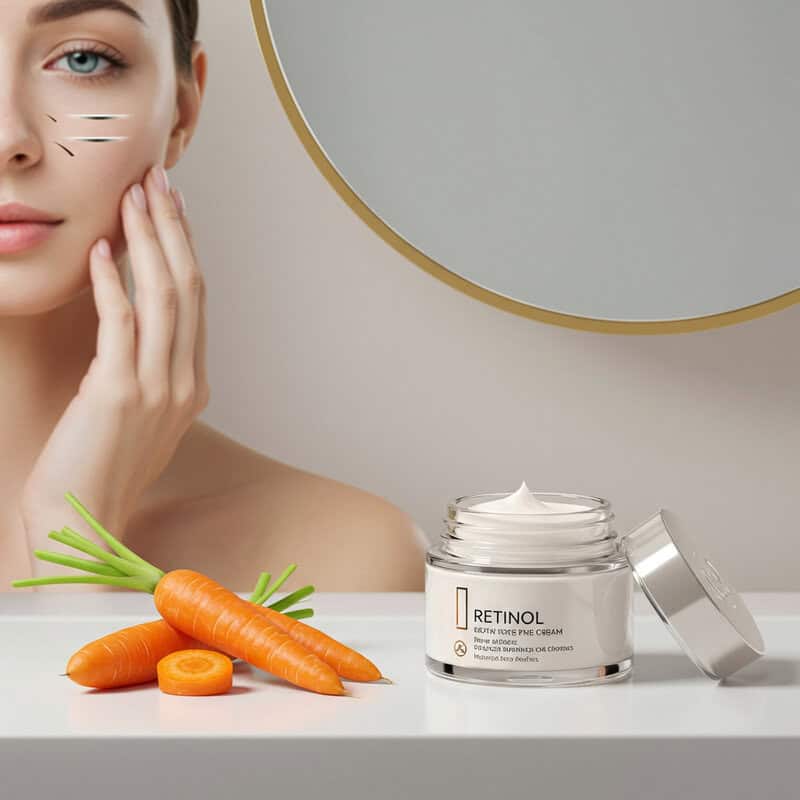
Retinol, a derivative of vitamin A, is highly regarded in skincare for its ability to stimulate collagen production and improve skin texture. By increasing collagen synthesis, retinol strengthens the skin under the eyes, making it firmer and less prone to sagging or puffiness. This can gradually diminish the appearance of under-eye bags over time. Retinol also accelerates cell turnover, helping to reduce discoloration and fine lines (National Institutes of Health).
There are significant differences between over-the-counter (OTC) and prescription retinol products. OTC formulations typically contain lower concentrations of retinoids, making them suitable for sensitive skin and gradual introduction. Prescription-strength options, such as tretinoin, offer more potent results but may increase the risk of irritation and require medical supervision. Selecting the right product depends on your skin’s sensitivity and the severity of your under-eye concerns.
It is important to note that retinol can cause dryness, redness, or peeling, especially when first introduced. Apply only a pea-sized amount and use a gentle moisturizer to minimize irritation. Always use sunscreen, as retinol increases skin’s sensitivity to sunlight. For usage guidance, consult this American Academy of Dermatology resource.
10. Sun Protection

Consistent sun protection is essential for maintaining the health and appearance of the delicate under-eye area. Ultraviolet (UV) radiation from the sun accelerates collagen breakdown and thins the skin, making under-eye bags and dark circles more pronounced. Chronic UV exposure can also lead to pigmentation changes and the formation of fine lines, compounding the aging effects in this sensitive region (Skin Cancer Foundation).
When comparing sunscreen types, mineral (physical) sunscreens containing zinc oxide or titanium dioxide are often recommended for the under-eye area because they are less likely to cause irritation. Chemical sunscreens absorb UV rays and are effective, but some formulations may sting sensitive skin or migrate into the eyes. Look for broad-spectrum products with an SPF of 30 or higher for comprehensive protection.
For optimal sun safety, apply sunscreen generously to the entire face, including the orbital bone and under-eye area, and reapply every two hours when outdoors. Pair sunscreen with sunglasses that offer UV protection and a wide-brimmed hat to shield the eyes from direct sunlight. For more sun safety guidance, visit the American Academy of Dermatology’s sunscreen selection guide.
11. Tea Bags Compress

Utilizing tea bags as a compress is a natural remedy with proven benefits for reducing under-eye puffiness. Both green and black tea are rich in antioxidants, particularly flavonoids and tannins, which help combat inflammation and soothe the skin. These compounds, along with residual caffeine, aid in constricting blood vessels and reducing fluid accumulation in the delicate under-eye area (Medical News Today).
Comparing green and black tea, both offer anti-inflammatory and vasoconstrictive effects, but green tea contains higher concentrations of catechins—potent antioxidants that further promote skin healing and protection. Black tea, on the other hand, often has a slightly higher caffeine content, which can enhance its de-puffing action. Both varieties are suitable, so the choice can be based on availability and personal preference.
For application, steep two tea bags in hot water for 3-5 minutes, then remove and allow them to cool completely—refrigerating them for added cooling effects is ideal. Place the tea bags over closed eyelids for 10-15 minutes, gently pressing to ensure contact with the under-eye area. Repeat as needed for visible results. For more information, see this Healthline guide.
12. Reduce Alcohol Consumption
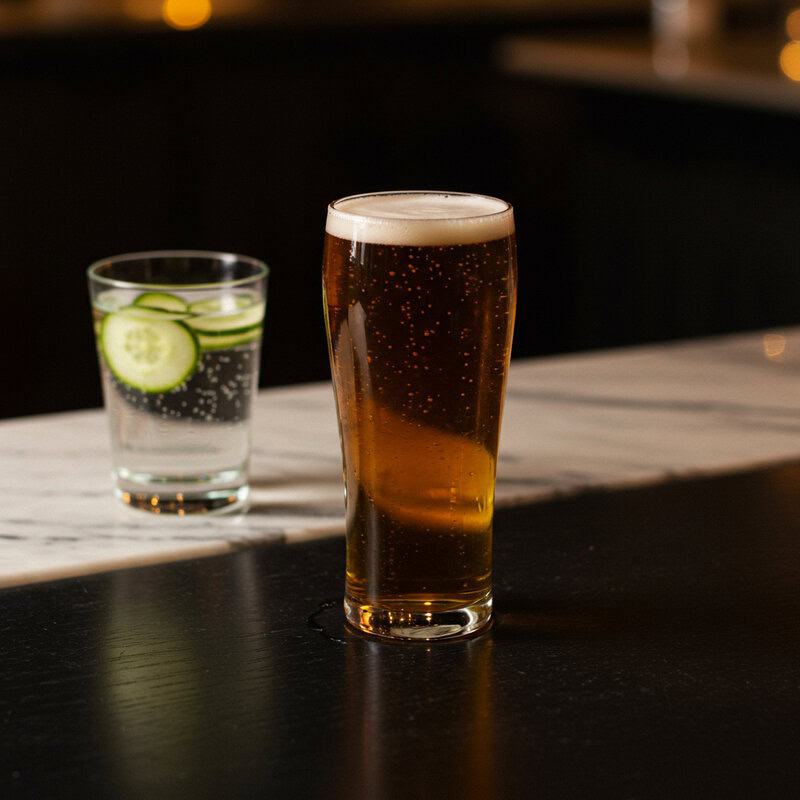
Alcohol is a well-known culprit in causing dehydration, which can significantly impact skin health and exacerbate the appearance of under-eye bags. When consumed, alcohol acts as a diuretic, prompting the body to lose more fluids than it takes in. This dehydration leaves the skin looking dull, saggy, and more prone to puffiness under the eyes, as the body attempts to retain whatever moisture it can (Healthline).
There is a notable difference between moderate and heavy alcohol consumption. Moderate drinking—defined by the Centers for Disease Control and Prevention (CDC) as up to one drink per day for women and two for men—may have limited impact on skin hydration if balanced with adequate water intake. Heavy or frequent drinking, however, increases dehydration risk, disrupts sleep, and can worsen under-eye bags over time.
To minimize these effects, set practical limits on alcohol intake and alternate alcoholic beverages with water to maintain hydration. Prioritize non-alcoholic options when possible, and be mindful of how your skin reacts after drinking. Making small adjustments in consumption can yield significant improvements in under-eye appearance and overall well-being.
13. Vitamin C Serums
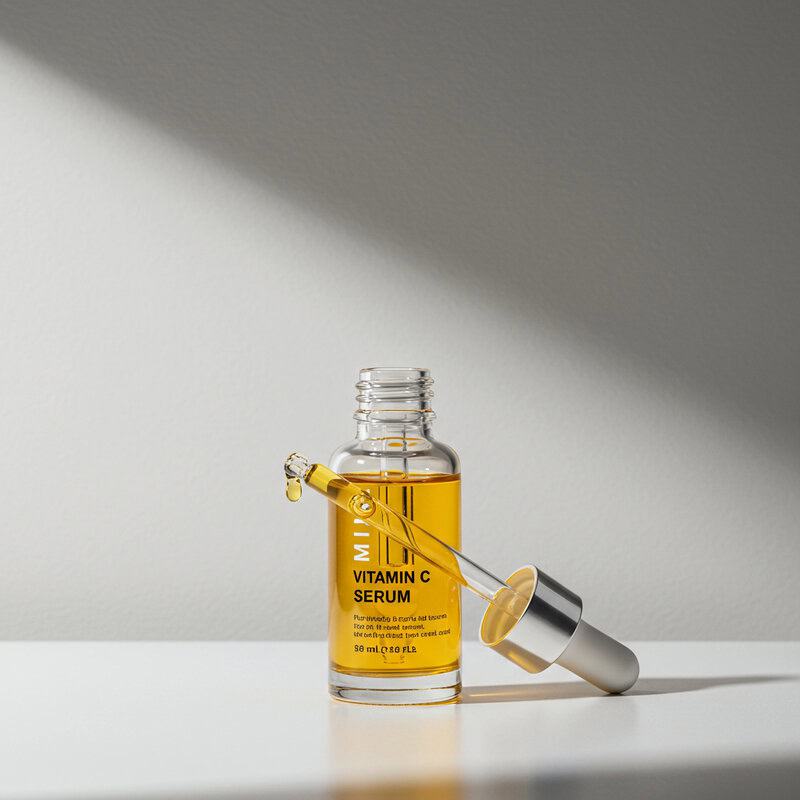
Vitamin C serums are renowned for their potent antioxidant and brightening effects on the skin, making them an effective solution for under-eye bags and dark circles. Vitamin C neutralizes free radicals, promotes collagen synthesis, and helps to even out pigmentation, resulting in firmer, more radiant skin around the eyes. Regular use can reduce the appearance of puffiness and prevent further damage from environmental stressors (National Institutes of Health).
Serum concentrations typically range from 5% to 20%, with higher concentrations offering more dramatic results but a greater risk of irritation. For the sensitive under-eye area, starting with a lower concentration—around 10%—is recommended, gradually increasing as your skin builds tolerance. Look for serums containing stable forms of vitamin C, such as ascorbic acid or sodium ascorbyl phosphate, which offer enhanced efficacy and better shelf life.
Tips for sensitive skin include patch-testing the serum on another area before applying under the eyes, using the product only once daily at first, and combining it with a gentle moisturizer. If redness or stinging occurs, reduce frequency or consult a dermatologist. For more information, visit this American Academy of Dermatology FAQ.
14. Avoid Smoking

Smoking is a leading factor in premature skin aging and the development of under-eye bags. The chemicals in tobacco smoke cause oxidative stress and directly break down collagen and elastin, which are vital proteins for maintaining skin firmness and elasticity. As a result, the delicate skin beneath the eyes becomes thinner, weaker, and more prone to sagging and puffiness (National Institutes of Health).
Comparisons between smokers and non-smokers reveal significant differences in skin texture, tone, and elasticity. Smokers are more likely to develop deep wrinkles, discoloration, and persistent under-eye bags due to impaired blood flow and reduced oxygen delivery to the skin. Non-smokers, on the other hand, tend to retain a more even complexion, with less swelling and fewer visible signs of aging in the eye area.
Quitting smoking can have dramatic benefits for both skin health and overall well-being. Support for cessation is widely available, including counseling, nicotine replacement therapy, and prescription medications. The Smokefree.gov portal offers resources, personalized plans, and community support to help individuals stop smoking and restore their skin’s natural resilience.
15. Healthy Diet

Nutrition plays a vital role in skin repair and the reduction of under-eye bags. Essential nutrients such as vitamin C (for collagen synthesis), vitamin E (an antioxidant that protects skin cells), vitamin K (improves blood clotting and reduces dark circles), and omega-3 fatty acids (support skin hydration and elasticity) all contribute to healthier, more resilient skin (National Institutes of Health). Zinc and selenium also assist in tissue repair and inflammation control.
Comparing processed foods to whole foods reveals stark differences in their effects on skin health. Processed foods are often high in sodium, added sugars, and unhealthy fats, which can contribute to fluid retention, inflammation, and dull skin. Whole foods, such as fresh fruits, vegetables, lean proteins, nuts, seeds, and whole grains, provide the vitamins, minerals, and antioxidants necessary for optimal skin function and repair.
For meal ideas that support under-eye health, consider a breakfast of oatmeal with berries and chia seeds, a lunch of grilled salmon with leafy greens and avocado, or a snack of carrot sticks with hummus. These meals deliver a balance of nutrients that help repair skin and minimize puffiness. For more healthy eating tips, visit the Harvard T.H. Chan School of Public Health.
16. Manage Stress
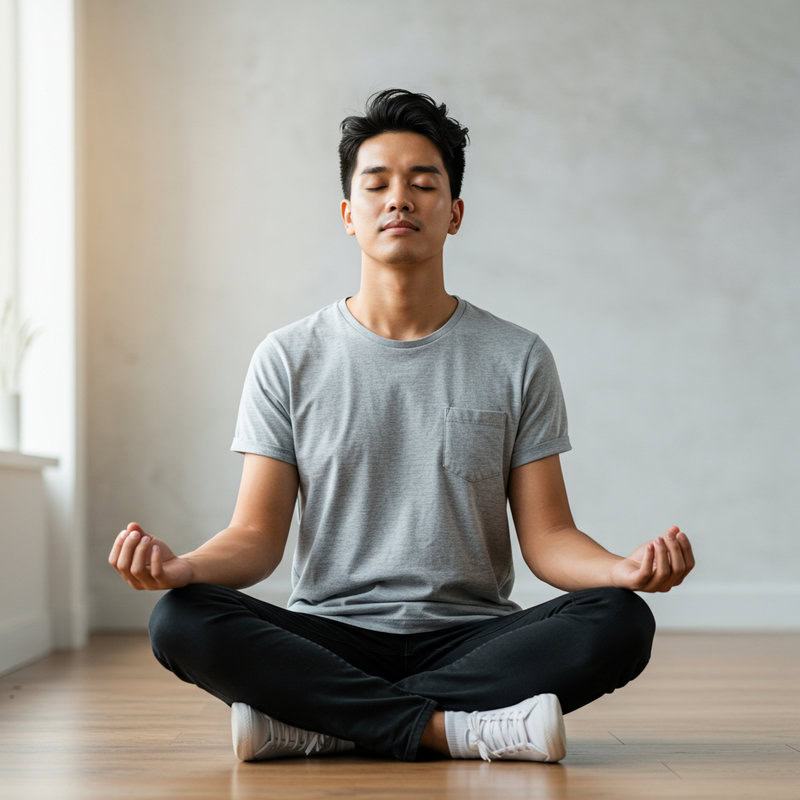
Chronic stress can significantly impact skin health, including the formation and persistence of under-eye bags. When the body is under stress, it produces higher levels of cortisol and other stress hormones. Elevated cortisol disrupts the skin’s barrier function, increases inflammation, and impairs circulation, all of which can exacerbate puffiness and dark circles under the eyes (National Institutes of Health).
There are a variety of coping techniques to reduce stress, each with unique benefits. Physical activity, such as walking, yoga, or cycling, helps release endorphins and lowers stress hormone levels. Creative outlets like journaling or art provide emotional release, while social support from friends and family can buffer the impact of stress on the body. Comparing these techniques, mindfulness-based practices—such as meditation or deep breathing—are especially effective in calming the nervous system and reducing physiological stress responses.
To incorporate mindfulness into your daily routine, try guided meditation apps, short breathing exercises, or progressive muscle relaxation. Even just a few minutes of focused mindfulness each day can make a noticeable difference in both emotional well-being and under-eye appearance. For more stress management resources, visit the U.S. Department of Health & Human Services.
17. Use Hyaluronic Acid

Hyaluronic acid is a naturally occurring molecule in the skin known for its exceptional moisture-retaining properties. It can hold up to 1,000 times its weight in water, making it highly effective at hydrating and plumping the delicate under-eye area. By attracting and locking in moisture, hyaluronic acid helps smooth fine lines, reduce the appearance of puffiness, and support overall skin resilience (National Institutes of Health).
When choosing between serums and creams, serums typically contain higher concentrations of hyaluronic acid and penetrate the skin more deeply, offering more intensive hydration. Creams, on the other hand, blend hyaluronic acid with emollients and other nourishing ingredients, providing a protective barrier that keeps moisture sealed in. For those with very dry or mature skin, using both a serum and a cream in tandem can maximize benefits.
To apply hyaluronic acid products effectively, start with clean, damp skin to help activate the molecule’s hydrating effects. Gently pat a small amount of serum or cream under the eyes, avoiding direct contact with the eyes themselves. Follow with a moisturizer if needed to lock in hydration. For more product guidance, visit the American Academy of Dermatology’s hyaluronic acid resource.
18. Cool Spoons
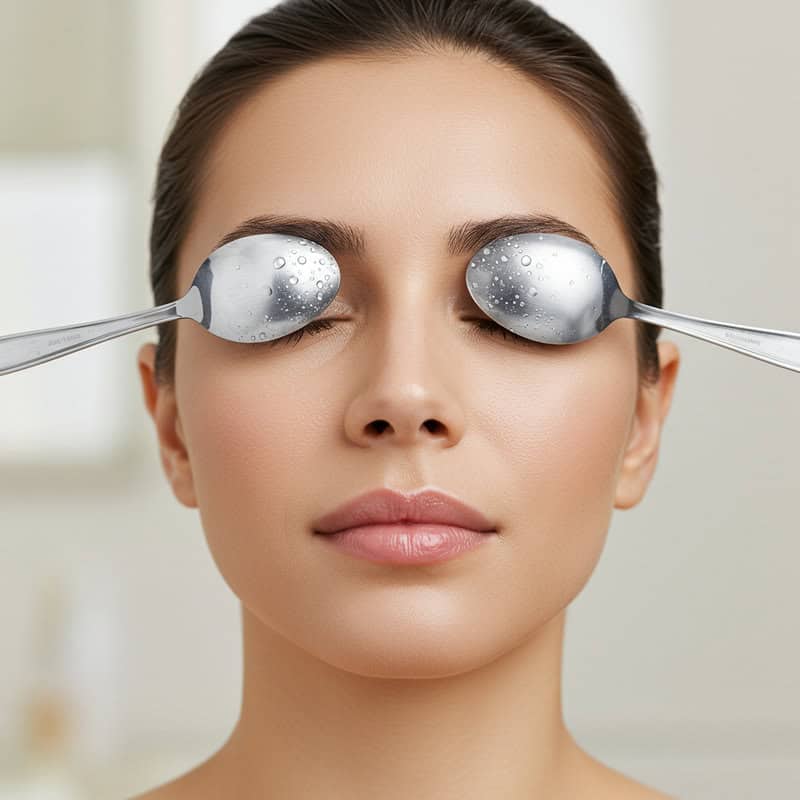
Using chilled metal spoons to address under-eye puffiness is a quick, accessible remedy that leverages the benefits of cold therapy. The cool temperature of the metal causes vasoconstriction, which means blood vessels under the skin become narrower. This process helps to quickly reduce swelling, minimize inflammation, and refresh the under-eye area. The technique is particularly appealing for its simplicity and lack of need for specialized products (Health.com).
While the effects are similar to those of traditional cold compresses, cool spoons offer the advantage of being easy to prepare and precisely shaped for the under-eye contour. Unlike gel packs or cloth compresses, spoons are lightweight and can be chilled rapidly, making them ideal for a quick morning fix. However, cold compresses may retain their temperature longer and cover a larger area, which can be beneficial for generalized facial swelling.
To use this method, place two metal teaspoons in the refrigerator for at least 30 minutes. Once chilled, gently press the backs of the spoons against the under-eye area for 5-10 minutes. Repeat as needed. Always avoid prolonged application to prevent discomfort. For more home remedy ideas, visit Medical News Today.
19. Under-Eye Patches
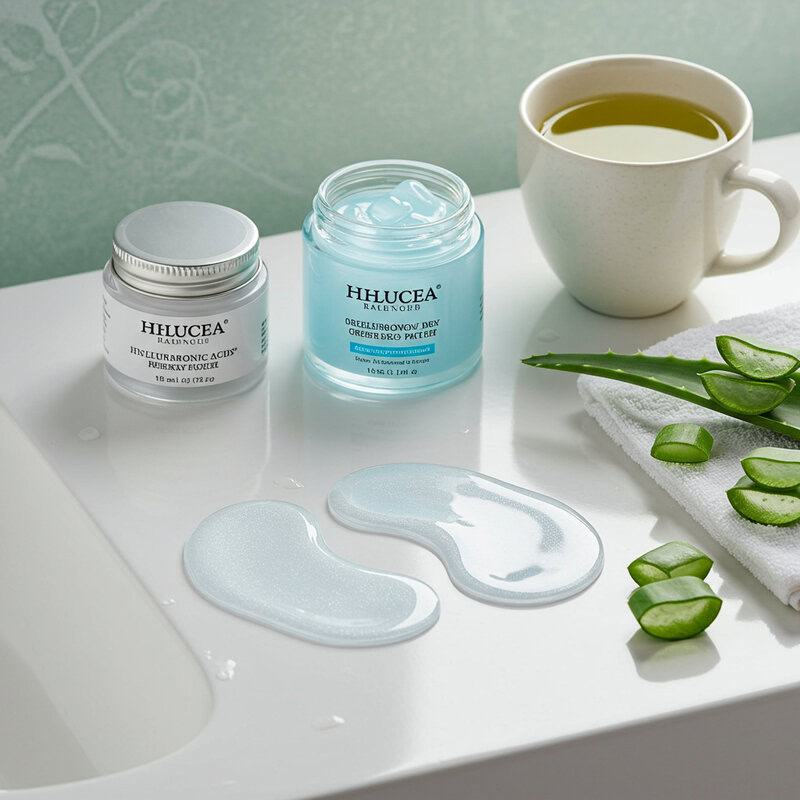
Under-eye patches have become a popular solution for targeting puffiness, dark circles, and dehydration in the delicate skin beneath the eyes. These patches often contain active ingredients such as hyaluronic acid for deep hydration, caffeine for vasoconstriction and de-puffing, peptides for collagen support, and botanical extracts like aloe vera or green tea for soothing and antioxidant effects (Byrdie).
There are two main types of under-eye patches: hydrogel and cloth. Hydrogel patches are made from a gel-like material that adheres closely to the skin, creating a cooling sensation that helps further reduce swelling. They are often infused with serums for intensive treatment and are favored for their comfort and effectiveness in delivering ingredients. Cloth patches, on the other hand, act more like a sheet mask for the eyes and are typically soaked in a serum or essence. While also effective, they may not adhere as tightly or provide the same cooling effect as hydrogel varieties.
For best results, use under-eye patches two to three times per week, or as directed on the packaging. Apply to clean, dry skin and leave on for 10-20 minutes. For additional tips and product recommendations, visit Allure.
20. Regular Exercise
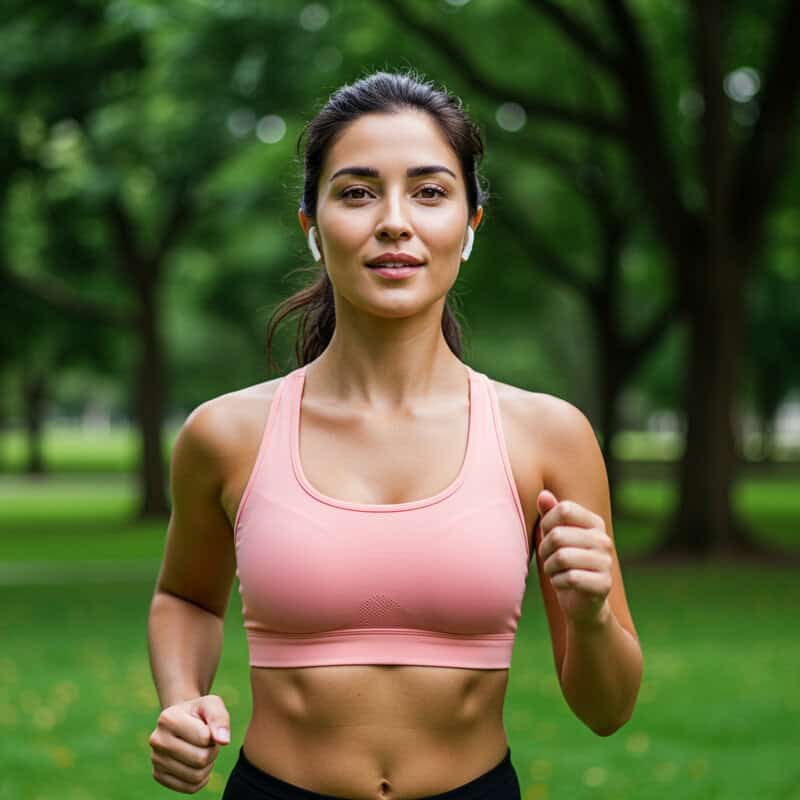
Engaging in regular physical activity offers notable benefits for skin health, including the reduction of under-eye bags. Exercise enhances circulation, ensuring that oxygen and nutrients reach skin cells more efficiently while facilitating the removal of waste products and excess fluids through the lymphatic system. Improved blood flow helps minimize fluid retention around the eyes and reduces overall puffiness (Healthline).
Comparing sedentary and active lifestyles reveals significant differences in appearance and skin vitality. Sedentary individuals are more prone to poor circulation, which can result in dull, puffy skin and a higher risk of fluid accumulation under the eyes. Conversely, those who maintain an active lifestyle typically experience brighter, firmer skin and less pronounced under-eye bags due to regular stimulation of the circulatory and lymphatic systems.
Effective routines include a mix of cardiovascular exercise (like brisk walking, cycling, or swimming) and strength training, performed at least 150 minutes per week as recommended by the Centers for Disease Control and Prevention. Adding yoga or stretching can further enhance lymphatic drainage and relaxation. Consistency is key—choose activities you enjoy, and gradually build a routine that supports both general health and under-eye appearance.
21. Manage Screen Time

Prolonged use of digital devices can cause significant strain on the eyes, contributing to puffiness, dark circles, and under-eye bags. Staring at screens for extended periods leads to decreased blinking, which in turn reduces moisture on the eye’s surface and increases fatigue in the surrounding muscles. This strain can result in the appearance of tired, swollen eyes by the end of the day (American Academy of Ophthalmology).
Blue light exposure from screens is another concern. While blue light itself does not directly cause under-eye bags, it disrupts circadian rhythms and impairs sleep quality. Poor sleep, as previously discussed, is a known contributor to under-eye puffiness. Additionally, blue light can accelerate skin aging by generating oxidative stress, potentially making the under-eye area look older and more fatigued (Dermatology Times).
To combat these effects, adopt the 20-20-20 rule: every 20 minutes, take a 20-second break and look at something 20 feet away. Adjust screen brightness, use blue light filters, and practice regular eye exercises. Limiting screen time before bed also helps promote healthier sleep and reduces morning puffiness.
22. Gentle Makeup Removal

Removing makeup from the under-eye area with harsh methods or products can cause irritation, inflammation, and even exacerbate puffiness and under-eye bags. Aggressive rubbing or using alcohol-based removers may break down the skin’s barrier, leading to redness, dryness, and increased sensitivity. Over time, this repeated irritation can contribute to long-term changes in the delicate under-eye skin (American Academy of Dermatology).
Comparing makeup removers, micellar water and oil-based cleansers are generally the gentlest options. Micellar water contains tiny cleansing molecules that attract makeup and impurities without the need for vigorous scrubbing. Oil-based removers effectively dissolve waterproof products and are less likely to strip the skin of its natural moisture. Cream or balm cleansers can also offer a soothing experience for sensitive skin. Avoid products containing fragrances, alcohol, or harsh surfactants, as these can irritate the under-eye area.
For gentle cleansing, saturate a soft cotton pad with your chosen remover and hold it over your closed eye for several seconds to allow the product to break down makeup. Then, gently wipe away with light, downward motions. Follow with a mild facial cleanser and moisturize to keep the under-eye area soft and healthy. For additional tips, visit the Healthline makeup removal guide.
23. Avoid Rubbing Eyes

Rubbing your eyes may offer momentary relief from itchiness or fatigue, but it can significantly worsen puffiness and under-eye bags. The repeated friction breaks tiny blood vessels, increases inflammation, and can exacerbate fluid accumulation in the delicate skin around the eyes. Chronic eye rubbing is also associated with darkening of the skin and a greater risk of developing fine lines and premature sagging (American Academy of Ophthalmology).
Comparing rubbing with gentler techniques, such as patting, reveals a clear difference in impact. Patting motions, especially when applying skincare products, minimize trauma to the skin and help evenly distribute creams or serums. Using the ring finger is particularly effective, as it naturally applies less pressure than other fingers, reducing the likelihood of irritation or damage.
To break the habit of rubbing, try addressing the root cause—such as allergies or dry eyes—by using lubricating eye drops or taking allergy medication. If you feel an urge to rub, gently press a cool compress or use clean hands to lightly pat the area instead. For more healthy habits and tips to protect your eyes, visit the CDC’s vision health resource.
24. Use Antioxidant-Rich Foods
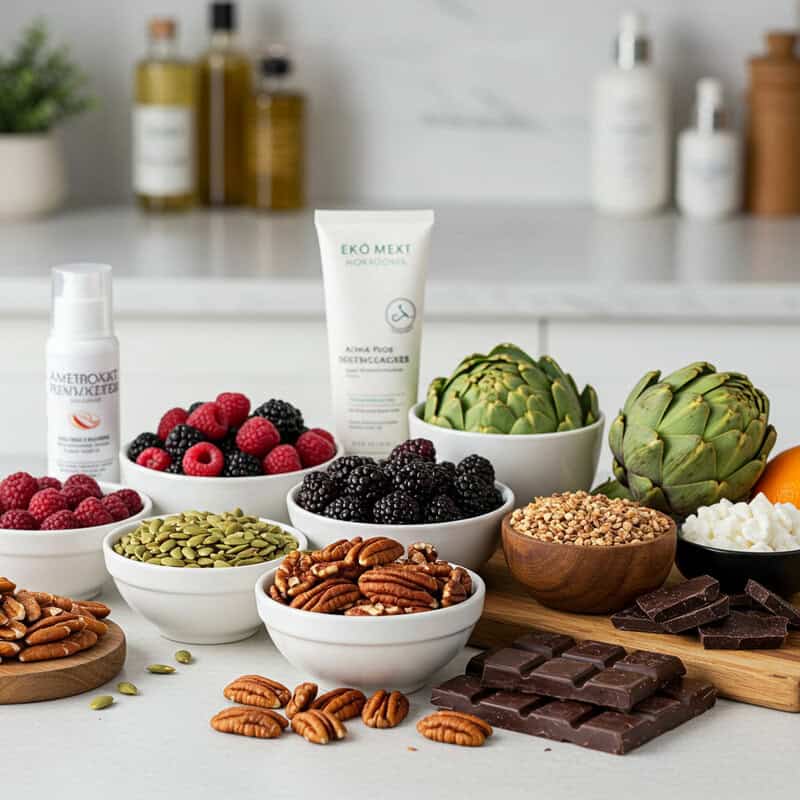
Antioxidants play a crucial role in maintaining skin health and reducing the appearance of under-eye bags. These powerful compounds neutralize free radicals—unstable molecules that damage skin cells and accelerate aging—thereby minimizing inflammation and supporting the skin’s natural repair processes. A diet rich in antioxidants can improve skin tone, enhance elasticity, and help prevent puffiness and discoloration under the eyes (Harvard T.H. Chan School of Public Health).
Comparing food sources, fruits and vegetables offer the highest concentrations of antioxidants, particularly those with vibrant colors. Berries (such as blueberries, strawberries, and raspberries) are exceptionally high in vitamin C and anthocyanins, while leafy greens like spinach and kale provide lutein and beta-carotene. Nuts, seeds, and legumes are also notable for their vitamin E and selenium content, supporting skin barrier function and healing.
Top choices for antioxidant-rich foods include blueberries, blackberries, goji berries, spinach, kale, red bell peppers, tomatoes, walnuts, almonds, and sunflower seeds. Incorporating these foods into your daily diet—such as adding berries to oatmeal or snacking on nuts—can help reduce oxidative stress and promote a healthier, more vibrant under-eye appearance. For further guidance, see this Medical News Today guide.
25. Use Cucumbers
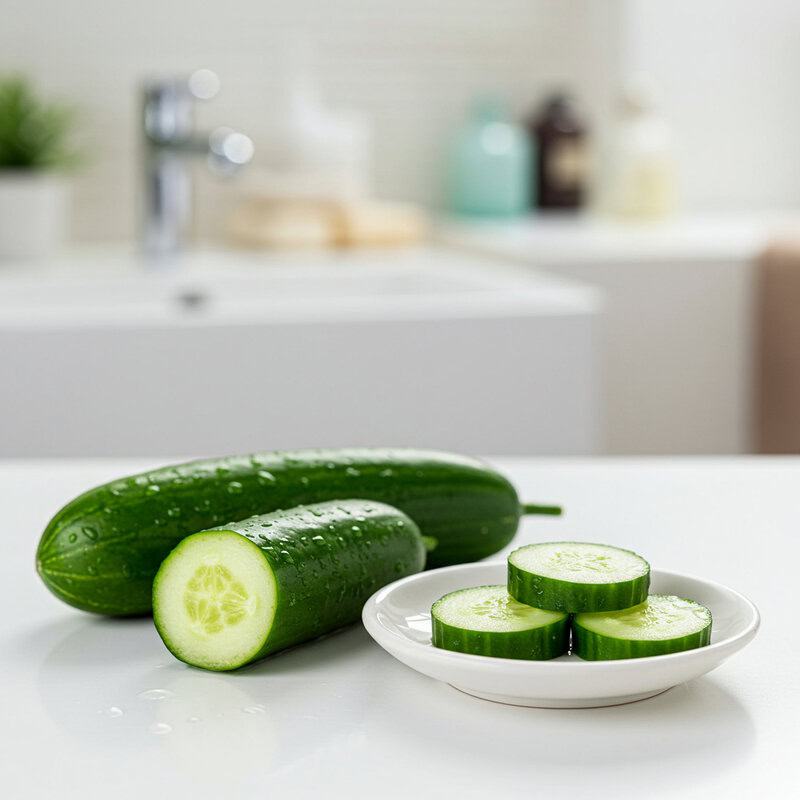
Cucumbers are a classic remedy for under-eye bags, celebrated for their natural cooling and anti-inflammatory properties. The high water content of cucumbers hydrates the skin, while their antioxidants—such as vitamin C and caffeic acid—help soothe irritation and reduce swelling. Placing chilled cucumber slices on the under-eye area constricts blood vessels, diminishes puffiness, and delivers a refreshing sensation that instantly revitalizes tired eyes (Healthline).
When compared with other vegetables, cucumbers excel due to their high water content and unique blend of antioxidants. While potatoes also contain anti-inflammatory compounds and can reduce swelling, their starchy texture is less soothing than cucumbers. Other vegetables, like cold lettuce leaves or cooled tea bags, offer some relief but often lack the immediate cooling and hydrating effects found in freshly sliced cucumbers.
For best results, refrigerate a cucumber for at least 30 minutes, then slice it into thin rounds. Place a slice over each closed eye and relax for 10-15 minutes. This can be repeated daily or as needed. Always use clean, fresh slices to avoid irritation or contamination. For more on natural remedies, see this Medical News Today article.
26. Over-the-Counter Eye Creams
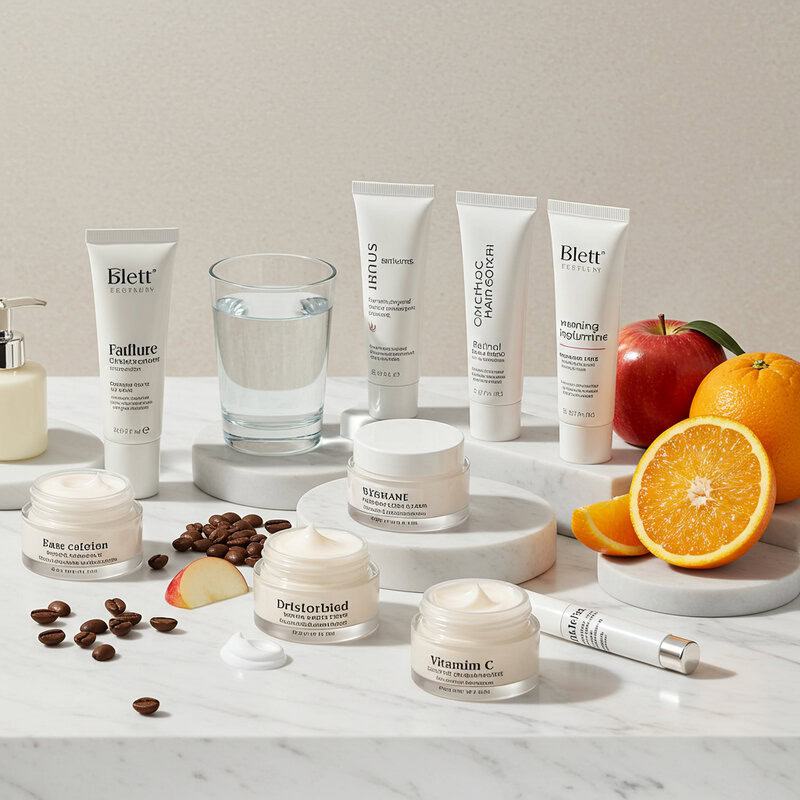
Over-the-counter (OTC) eye creams are widely used to minimize under-eye bags, puffiness, and dark circles. These creams typically contain active ingredients such as caffeine (to constrict blood vessels and reduce swelling), hyaluronic acid (for deep hydration), retinol (to boost collagen production), peptides (to support skin structure), and antioxidants like vitamin C and E (to combat free radical damage). Some formulas also include soothing agents such as aloe vera or chamomile extract to calm irritation and inflammation (Healthline).
Price points for OTC eye creams can vary greatly, from budget-friendly drugstore options to high-end luxury brands. While more expensive products may offer a luxurious texture or additional active ingredients, many affordable creams contain the essential components needed for visible improvement. It’s important to note that the efficacy of a product often depends more on the concentration and stability of its ingredients than on its price tag.
Expectations for results should be realistic—while OTC eye creams can visibly reduce mild to moderate puffiness and improve skin texture and tone, they may not eliminate severe under-eye bags or deep-set issues entirely. Consistent application, typically twice daily, is key for best results. For product recommendations, visit Allure’s guide to top eye creams.
27. Manage Chronic Conditions

Chronic health conditions such as thyroid disorders, kidney disease, and allergies can significantly contribute to the formation of under-eye bags. These diseases may cause fluid retention, inflammation, or changes in blood flow, all of which are reflected in the delicate under-eye area. For example, hypothyroidism can lead to generalized puffiness, while untreated kidney issues may result in persistent swelling due to impaired fluid balance (Healthline).
Comparing untreated and well-managed cases highlights the profound impact of medical care. Individuals whose conditions remain undiagnosed or poorly controlled are more likely to experience severe and persistent under-eye bags, along with other systemic symptoms. In contrast, those who effectively manage their chronic diseases through medication, lifestyle changes, and regular monitoring often see a reduction in under-eye swelling and improvement in overall skin appearance.
It is essential to seek regular medical check-ups if you notice sudden or unexplained changes in your under-eye appearance, especially if accompanied by other symptoms like fatigue, weight changes, or shortness of breath. Early diagnosis and management of underlying health issues not only improve under-eye bags but also safeguard long-term health. For more information, visit the CDC’s chronic disease resource.
28. Use Aloe Vera Gel
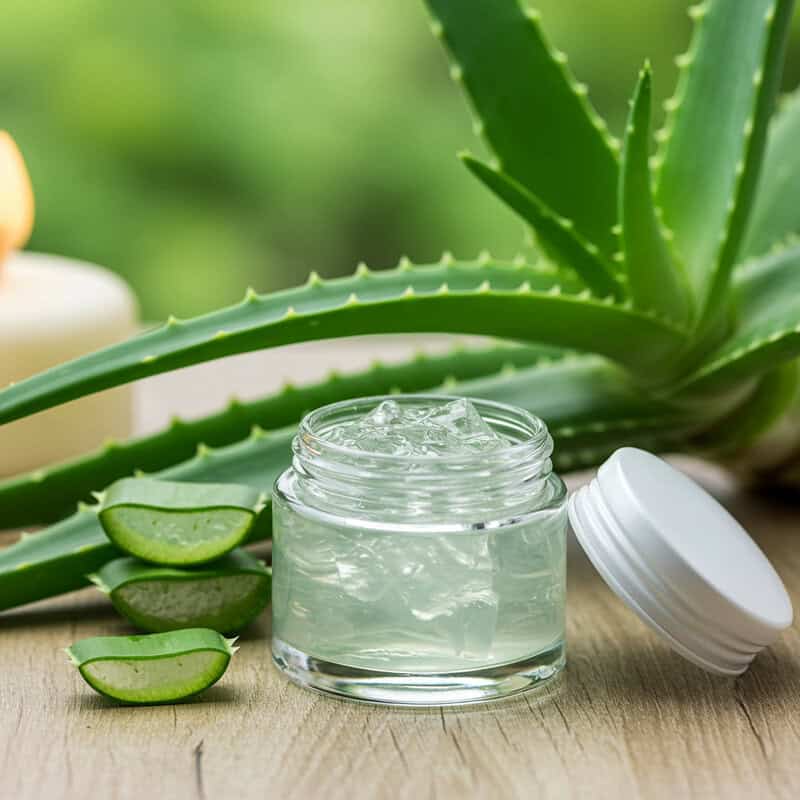
Aloe vera gel is celebrated for its soothing and hydrating properties, making it an excellent remedy for under-eye puffiness and irritation. Rich in vitamins, minerals, and antioxidants, aloe vera helps calm inflammation, moisturize the skin, and promote healing. Its natural cooling effect can provide immediate relief to tired or swollen under-eye areas, while its polysaccharides support skin repair and barrier function (Medical News Today).
When comparing pure aloe vera gel to products that contain aloe mixed with other ingredients, pure gel is generally less likely to cause irritation or allergic reactions, especially for those with sensitive skin. Many commercial products blend aloe with fragrances, alcohols, or preservatives that may diminish its benefits or trigger sensitivity. Opting for 99% pure aloe vera gel or extracting gel directly from the plant ensures the highest potency and gentlest care for the under-eye region.
To use, refrigerate pure aloe vera gel for a cooling boost. Apply a small amount gently under the eyes, avoiding direct contact with the eyes themselves. Leave it on for 10-15 minutes before rinsing or simply pat dry if using overnight. For more application tips, see the Healthline aloe vera guide.
29. Sleep on Your Back
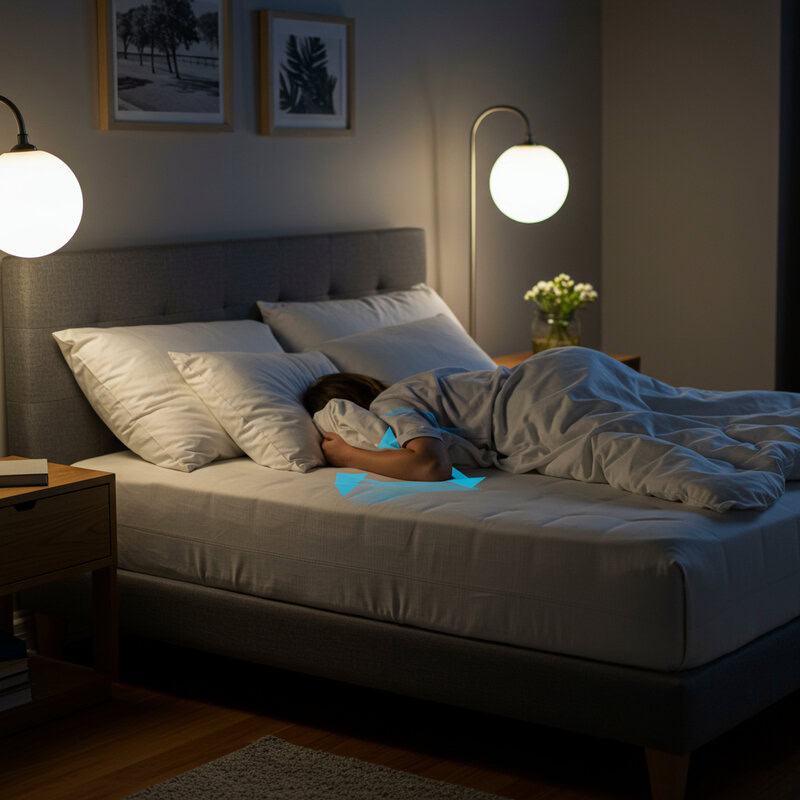
Sleeping position plays a significant role in the development of under-eye bags, largely due to the effect of gravity on fluid distribution in the facial tissues. When you sleep on your back, gravity helps to evenly distribute fluids throughout the face, preventing them from pooling in the delicate under-eye area. This can minimize morning puffiness and reduce the likelihood of persistent under-eye bags (Sleep Foundation).
Comparing different sleeping positions, side and stomach sleepers are more prone to fluid accumulation under the eyes, as these positions allow gravity to draw fluids toward the side of the face pressed against the pillow. This can lead to noticeable swelling and even facial asymmetry over time. Sleeping on your back with your head slightly elevated is considered the optimal position for preventing under-eye puffiness, as it supports better lymphatic drainage and minimizes direct pressure on the delicate under-eye skin.
To maintain this posture, use a supportive pillow that keeps your head and neck aligned and slightly elevated. Specialized pillows or wedge cushions can help those who have difficulty staying on their backs throughout the night. Consistency with this sleeping position can lead to noticeable improvements in under-eye appearance. For more tips, visit the Cleveland Clinic’s sleep position guide.
30. Try Peptide Creams
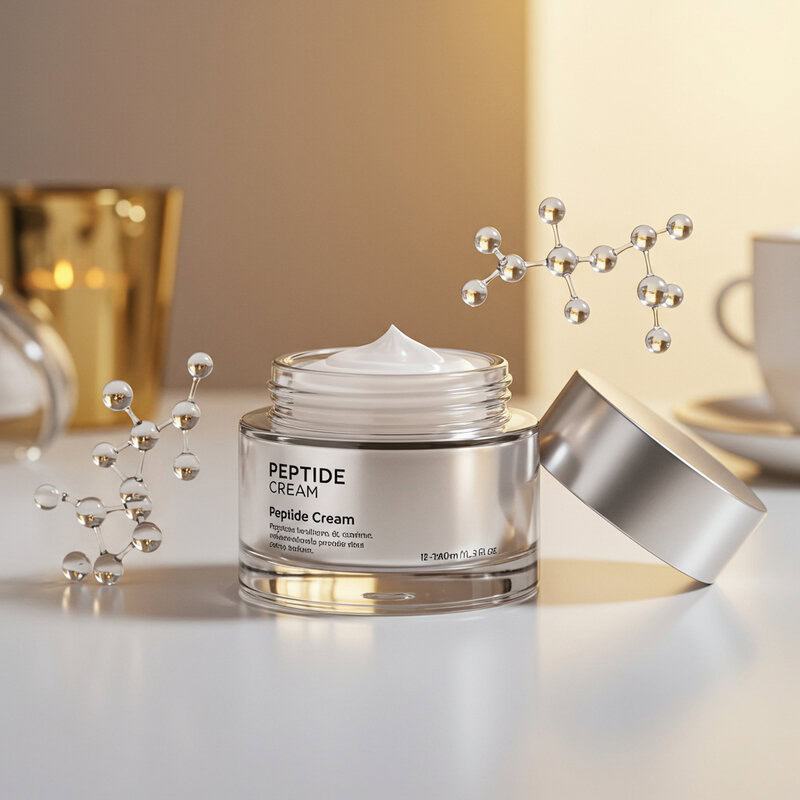
Peptide creams are gaining popularity for their powerful role in skin rejuvenation, particularly in reducing under-eye bags. Peptides are short chains of amino acids that act as building blocks for proteins like collagen and elastin. When applied to the skin, they signal the body to ramp up collagen production, leading to firmer, more elastic skin beneath the eyes. This increased structural support helps diminish puffiness and smooth the appearance of fine lines (Healthline).
When compared to other anti-aging products, such as retinol or vitamin C serums, peptide creams are generally gentler and suitable for sensitive skin. Retinol accelerates cell turnover and can cause irritation, while vitamin C offers brightening and antioxidant benefits. Peptide creams, however, focus primarily on rebuilding skin structure and are less likely to cause redness or peeling, making them an excellent option for the delicate under-eye area or for those new to anti-aging regimens.
For best results, apply peptide cream to clean skin twice daily, gently patting it into the under-eye area with your ring finger. Combine with a hydrating moisturizer and sunscreen during the day. For more information on peptide skincare, visit the Byrdie peptide cream guide.
31. Avoid Heavy Night Creams

Thick, occlusive night creams may seem like a hydrating solution for the under-eye area, but they can actually trap fluid and exacerbate puffiness. The dense texture of these products forms a barrier on the skin’s surface, potentially preventing natural fluid exchange and lymphatic drainage overnight. This is particularly problematic for the delicate skin under the eyes, which is already prone to retaining excess fluid and developing bags (Health.com).
Lightweight gels or serums are generally more suitable for nighttime use around the eyes. These products hydrate without creating a heavy, occlusive layer, allowing the skin to breathe and fluids to circulate more freely. Heavy creams, by contrast, are better reserved for areas of the face that require intense moisturization, such as the cheeks or forehead, rather than the sensitive under-eye region.
For an optimal nighttime routine, cleanse your face thoroughly, apply a lightweight hydrating serum or eye gel, and follow with a gentle moisturizer if needed. Elevate your head during sleep to further discourage fluid pooling. By choosing lighter formulations and following these steps, you can wake up to refreshed, less puffy eyes. For tips on nighttime skincare, visit the American Academy of Dermatology’s night routine guide.
32. Use Witch Hazel
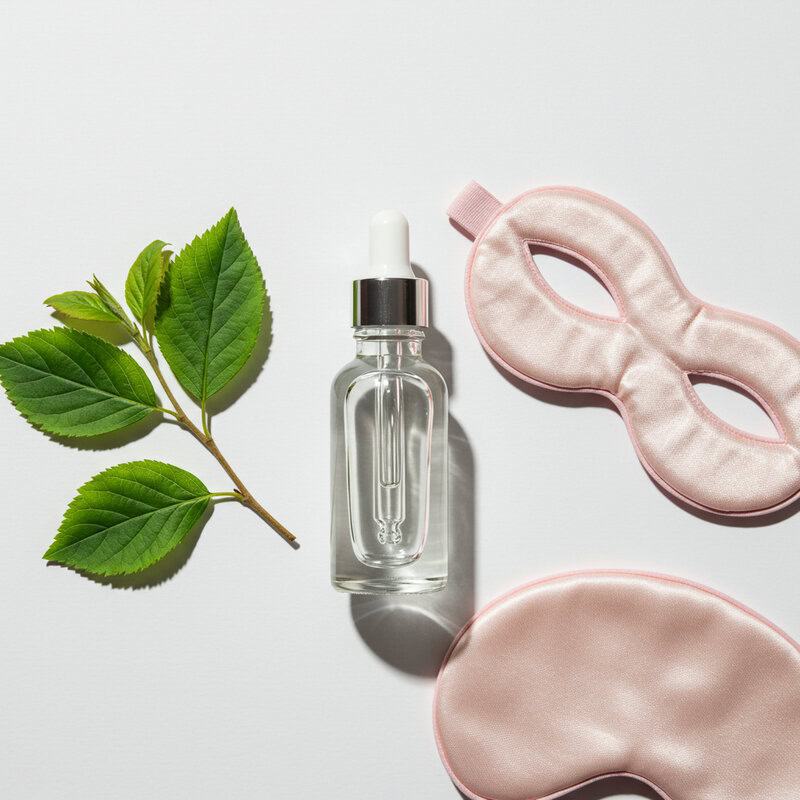
Witch hazel is a natural remedy renowned for its astringent properties, making it a popular choice for reducing under-eye puffiness and tightening the delicate skin in this area. The tannins found in witch hazel help constrict blood vessels and decrease inflammation, which can temporarily lessen swelling and refresh the appearance of tired eyes (Healthline).
Compared with other natural remedies like cucumber slices or aloe vera gel, witch hazel works more directly to tighten and tone the skin. While cucumbers and aloe provide cooling and hydrating effects, witch hazel’s primary benefit lies in its ability to reduce excess oil and shrink tissues, making it particularly effective for those prone to puffiness. However, because witch hazel can be drying, it may not be as suitable for individuals with very sensitive or dry skin.
For safe use, choose an alcohol-free witch hazel formula to minimize irritation. Soak a cotton pad with witch hazel and gently dab around the under-eye area, avoiding direct contact with the eyes. Limit application to once daily and follow with a light moisturizer if needed. For additional tips and precautions, refer to this Medical News Today article.
33. Avoid Excessive Heat Exposure
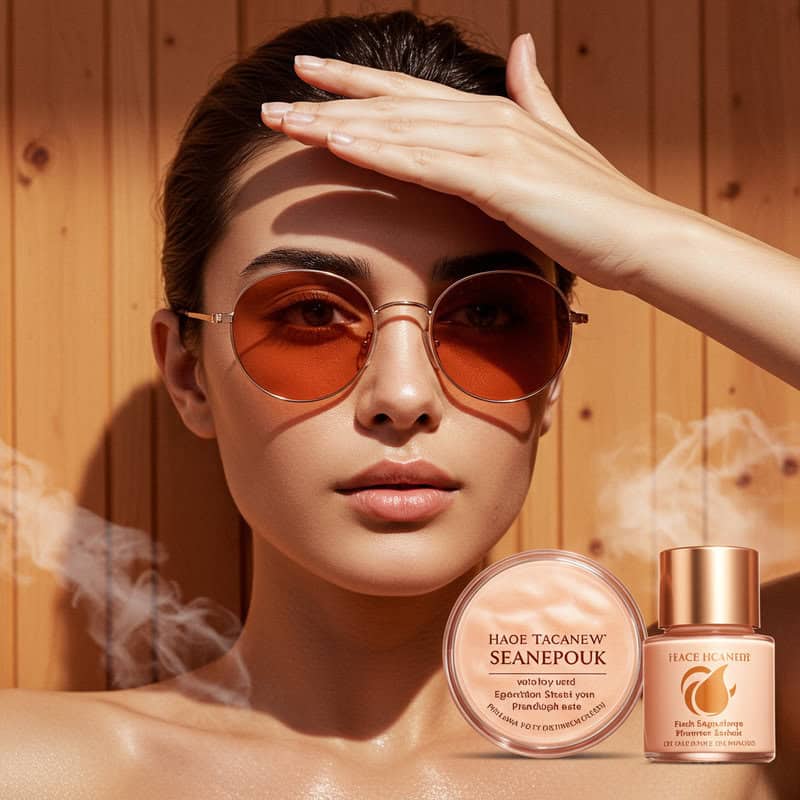
Exposing the skin to high temperatures can worsen under-eye bags by promoting vasodilation, or the widening of blood vessels, which increases blood flow and fluid accumulation in the delicate under-eye area. Prolonged or repeated heat exposure leads to more pronounced swelling, puffiness, and redness, especially for individuals already prone to fluid retention or sensitive skin (Healthline).
Different environments can have varying effects on under-eye puffiness. Hot, humid climates or frequent use of saunas, steam rooms, and hot showers can aggravate swelling. In contrast, cooler, well-ventilated environments typically help maintain normal fluid balance in the skin. Air conditioning, while reducing heat, may also dry out skin, so it’s important to find a balance and maintain hydration.
Protective strategies include limiting time spent in hot showers or steam rooms, using lukewarm water for facial cleansing, and avoiding direct heat sources such as hair dryers or heaters aimed at the face. Wearing sunglasses and hats can further shield the delicate under-eye region from sun and heat exposure. For more heat safety advice and skin care tips, see the American Academy of Dermatology’s sun and heat protection guide.
34. Use Potato Slices

Potato slices are a traditional home remedy for under-eye bags, valued for their high starch content and natural enzymes such as catecholase. These components can help to lighten dark circles, reduce inflammation, and draw out excess fluid from the skin. The coolness of raw potato slices also provides an immediate soothing effect, helping to constrict blood vessels and reduce swelling under the eyes (Healthline).
Compared to cucumbers, potatoes offer additional benefits in terms of mild skin lightening and anti-inflammatory properties due to their unique enzymes and vitamin C content. While cucumbers are excellent for hydration and cooling, potatoes may be more effective for those dealing with both puffiness and dark pigmentation. Both options, however, are gentle and suitable for most skin types.
To prepare, thoroughly wash and peel a raw potato, then cut it into thin, even slices. Chill the slices in the refrigerator for 20-30 minutes for enhanced cooling. Place a slice over each closed eye and relax for 10-15 minutes. Afterward, rinse the area with cool water. For more natural under-eye remedies, visit this Medical News Today guide.
35. Monitor Hormonal Changes

Hormonal fluctuations play a significant role in fluid retention, which can manifest as under-eye bags or puffiness. Changes in hormone levels affect how the body regulates sodium, water balance, and blood vessel function, all of which influence the appearance of the under-eye area. Recognizing these patterns can help individuals manage and reduce puffiness effectively (Healthline).
Different hormonal changes have distinct effects on fluid retention. During the menstrual cycle, estrogen and progesterone shifts can cause the body to hold onto more water, leading to temporary puffiness around the eyes. Menopause is associated with fluctuating estrogen levels, which can alter skin texture and increase fluid accumulation. Thyroid disorders, such as hypothyroidism or hyperthyroidism, may also cause chronic swelling and changes in skin appearance due to their impact on metabolism and fluid balance. Each of these conditions can create varying degrees of under-eye swelling, which may come and go or persist over time.
It is important to consult a doctor if you notice persistent or unexplained under-eye puffiness, especially if accompanied by other symptoms such as irregular periods, weight changes, fatigue, or mood shifts. Early evaluation and management of hormonal imbalances can improve both your overall health and skin appearance. For more information, visit the Endocrine Society.
36. Use Rose Water
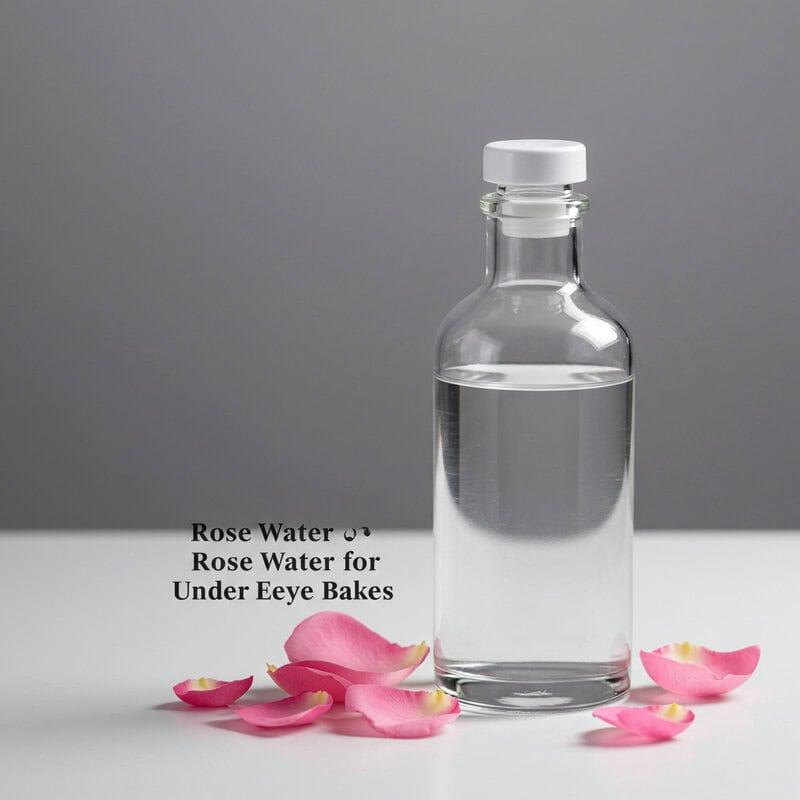
Rose water is a gentle, natural remedy that offers notable anti-inflammatory and soothing benefits for the delicate under-eye area. Its mild astringent properties help tone the skin, reduce redness, and calm irritation, making it especially effective for minimizing puffiness and refreshing tired eyes. The antioxidants found in rose water also support skin repair and protect against environmental stressors (Healthline).
When compared with other toners, rose water stands out for its mild, non-irritating formula. Many commercial toners contain alcohol or strong astringents that can dry out or sensitize the under-eye skin. Rose water, by contrast, hydrates while soothing inflammation and is suitable for even the most sensitive complexions. Other botanical waters, like chamomile or lavender, offer similar soothing effects but may lack the unique antioxidant profile of rose water.
For best results, chill rose water in the refrigerator before use. Soak a cotton pad in the chilled rose water and gently place it over closed eyes for 10-15 minutes, or lightly dab the liquid onto the under-eye area. This can be done daily or as needed for a refreshing, de-puffing effect. For more information, visit this Medical News Today article.
37. Avoid Overuse of Eye Drops

While eye drops can offer quick relief for dryness, redness, or allergies, their overuse—especially decongestant or vasoconstrictor types—may lead to rebound swelling and increased under-eye puffiness. Frequent use of these drops causes blood vessels to constrict temporarily; however, with repeated application, vessels can dilate even more once the effect wears off, resulting in worsened redness and swelling (American Academy of Ophthalmology).
There are various types of eye drops, including lubricating (artificial tears), antihistamine, and decongestant drops. Lubricating drops are generally safe for regular use, as they simply add moisture without affecting blood vessels. Antihistamine drops target allergy symptoms and can be effective when used as directed. Decongestant or “redness relief” drops, on the other hand, are the most likely to cause rebound effects if used excessively. It’s important to differentiate between these types to avoid unnecessary irritation or dependence.
For safe use, follow the instructions on the packaging and avoid using decongestant drops for more than a few days at a time. If you require frequent relief, consult an eye care professional to address the underlying cause. For more guidance, see the FDA’s consumer update on eye drop safety.
38. Use Chamomile Tea Bags

Chamomile tea bags are valued for their rich content of anti-inflammatory compounds such as apigenin and bisabolol, which help calm irritation and reduce swelling in the under-eye area. Chamomile’s natural soothing effects make it an excellent choice for alleviating puffiness, redness, and sensitivity. The antioxidants present also contribute to skin repair and protection against environmental stressors (Healthline).
Compared to other herbal teas like green or black tea, chamomile stands out for its gentle, non-caffeinated formulation and specific anti-inflammatory benefits. While green and black teas offer vasoconstrictive and antioxidant effects, chamomile is particularly suitable for individuals with sensitive skin or those looking to avoid caffeine. Other herbal teas, such as calendula or rooibos, also provide anti-inflammatory properties, but chamomile’s longstanding use in traditional medicine for soothing skin makes it a preferred choice.
To use chamomile tea bags, steep them in hot water for 3-5 minutes, then allow them to cool completely or chill in the refrigerator for a stronger cooling effect. Place the cooled tea bags over closed eyes for 10-15 minutes, gently pressing to ensure contact with the under-eye skin. For more herbal remedy tips, see this Medical News Today article.
39. Get Regular Eye Check-Ups
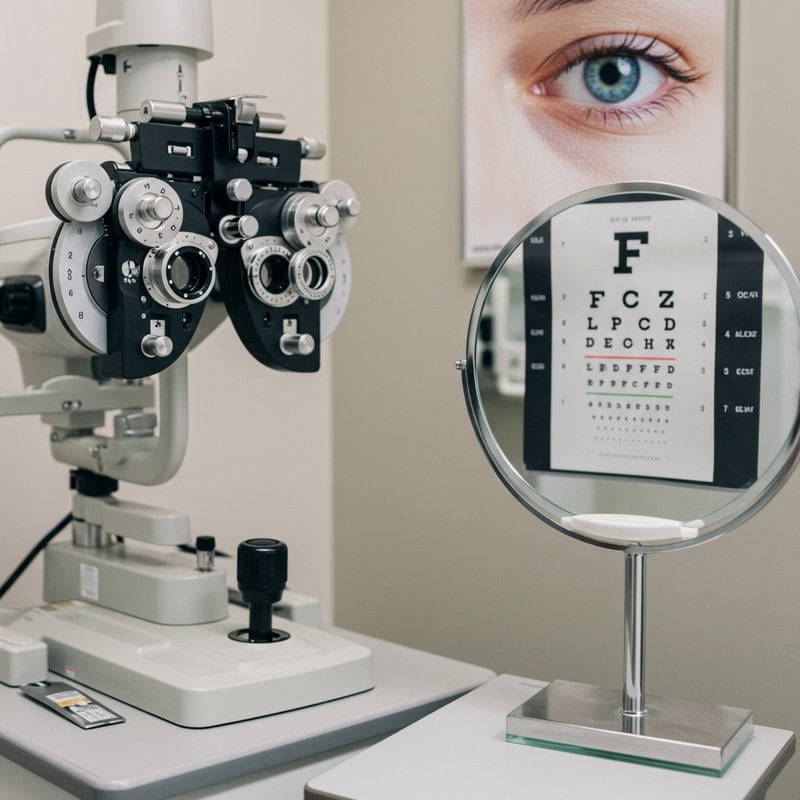
Under-eye bags may sometimes signal underlying eye health issues or systemic conditions that require professional evaluation. Swelling and puffiness can be symptoms of allergies, infections, or blockages in the tear ducts, as well as more serious concerns like thyroid eye disease. Regular eye examinations allow for the early detection of these problems, helping to distinguish between cosmetic puffiness and health-related causes (American Academy of Ophthalmology).
Routine check-ups offer a significant advantage over infrequent or reactive visits. Individuals who schedule annual or biennial eye exams are more likely to catch subtle changes in eye or eyelid health before they progress. Infrequent check-ups, by contrast, may result in overlooked symptoms, delayed treatment, and potentially more severe complications. Eye care professionals can also provide guidance on managing dryness, allergies, or irritation that contribute to under-eye bags.
Screening advice includes scheduling comprehensive eye exams every 1-2 years, or more frequently if you have risk factors such as diabetes, a family history of eye disease, or persistent under-eye swelling. Report any sudden, painful, or severe changes in your eyelids or vision to your eye doctor promptly. For more information, see the CDC’s eye health resource.
40. Try Light Lymphatic Tapping
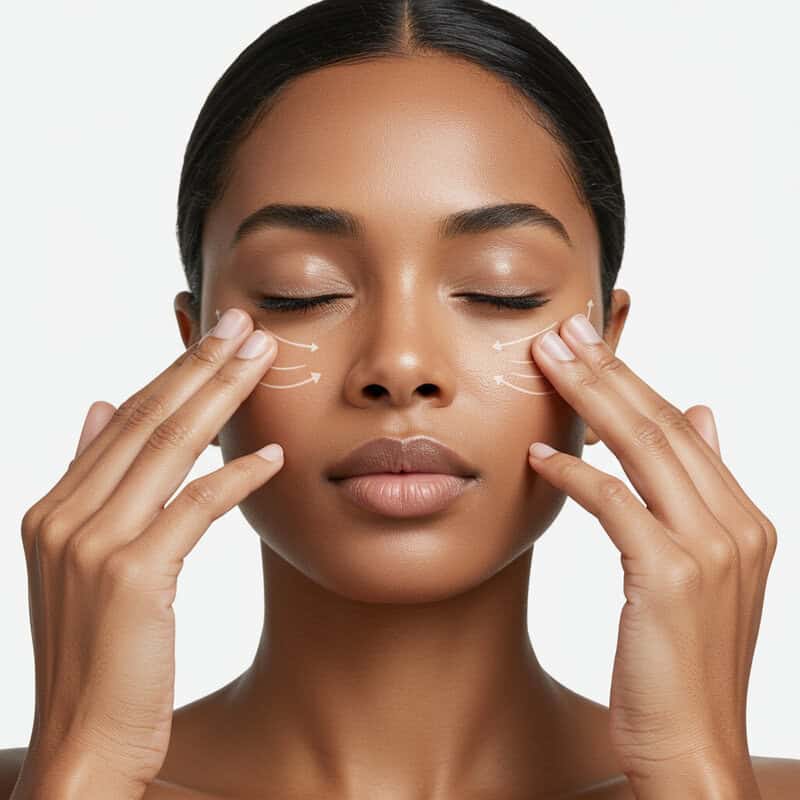
Light lymphatic tapping is a gentle self-care technique that can enhance lymphatic drainage and help reduce under-eye puffiness. By stimulating the flow of lymph—a fluid responsible for removing waste and excess fluid from tissues—tapping encourages the body’s natural processes to alleviate swelling in the delicate under-eye area. This method is especially beneficial for those who experience fluid retention due to sleep posture, allergies, or hormonal fluctuations (Healthline).
Compared to traditional facial massage, which often involves sweeping or circular motions, lymphatic tapping uses a very light, rhythmic touch. Tapping is less likely to stretch or irritate sensitive skin, making it ideal for the fragile under-eye region. Both methods aim to promote drainage, but tapping is quicker and easier to incorporate into a daily routine, particularly for those new to facial self-massage.
To perform light lymphatic tapping, use your ring fingers to gently tap along the orbital bone—beginning at the inner corners of the eyes, moving outward along the lower eye socket, and then back underneath the brow bone. Continue tapping for 1-2 minutes, using minimal pressure. This can be done morning and night to support a refreshed appearance. For more techniques, visit the Byrdie lymphatic drainage guide.
41. Use Collagen-Boosting Supplements
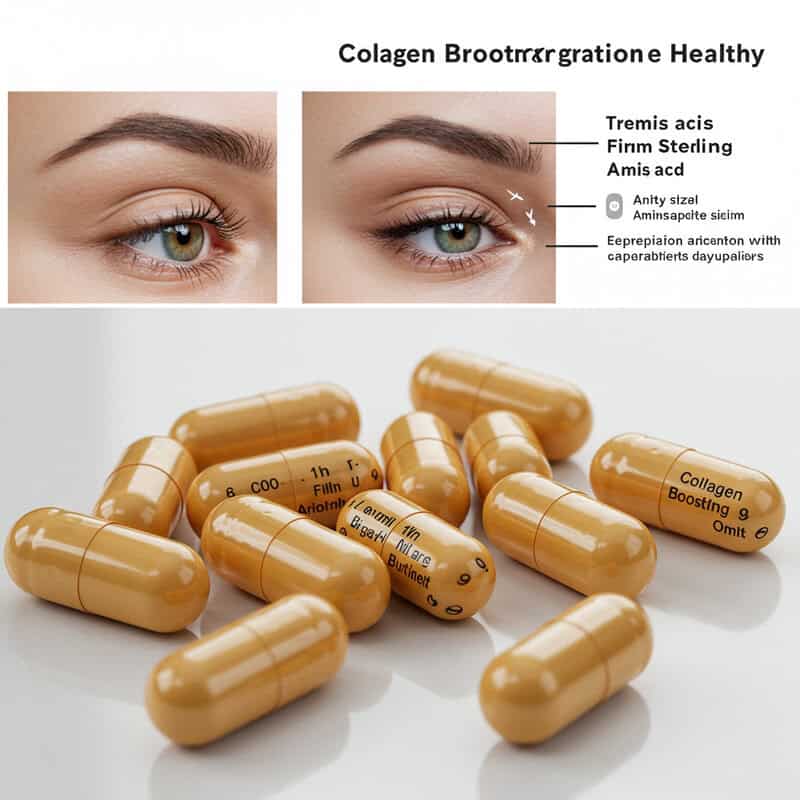
Collagen is a fundamental protein responsible for skin firmness, elasticity, and overall structure. As we age, natural collagen production declines, leading to thinner skin, increased laxity, and more visible under-eye bags. Collagen-boosting supplements aim to counteract this process by providing the body with amino acids needed for collagen synthesis, ultimately improving the appearance and resilience of the under-eye area (National Institutes of Health).
There are several types of collagen supplements, including hydrolyzed collagen peptides, marine collagen, and collagen blends fortified with vitamin C, biotin, or hyaluronic acid. Hydrolyzed collagen peptides are the most common, as they are broken down for easier absorption. Marine collagen, sourced from fish, is often preferred for its smaller particle size and compatibility with human skin. Plant-based supplements do not contain collagen but may include nutrients that support collagen production, such as vitamin C or silica.
The efficacy of collagen supplements for skin health is supported by emerging research, with many users reporting improved hydration, elasticity, and a reduction in fine lines after consistent use. However, results vary, and supplements should complement a balanced diet. For more information on collagen and skin health, visit this Healthline guide.
42. Avoid Over-Moisturizing
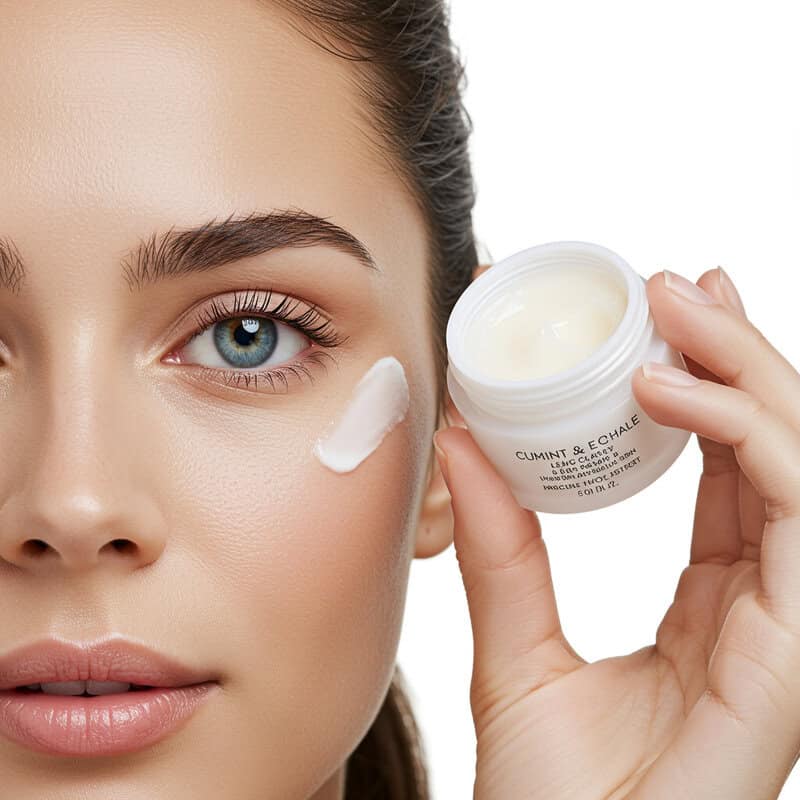
While hydration is essential for healthy skin, over-moisturizing the under-eye area can do more harm than good. Excessive application of heavy creams or layering multiple moisturizing products can clog pores, trap fluid beneath the skin, and contribute to increased puffiness and under-eye bags. This is particularly concerning in the delicate eye region, where the skin is thinner and more prone to swelling (Healthline).
Comparing moisturizing habits, individuals who use lightweight gels or serums and apply only a small amount tend to have healthier, less puffy under-eye skin. In contrast, those who frequently reapply thick or occlusive creams may notice more swelling, especially if the product creates a barrier that impedes lymphatic drainage. The right balance is key—enough moisture to support skin suppleness without overwhelming the area and hindering natural fluid movement.
To avoid over-moisturizing, choose products specifically formulated for the eye area and apply only a pea-sized amount. Use gentle patting motions rather than rubbing, and limit application to once or twice daily. If you notice increased puffiness, reduce product use and consult a dermatologist if needed. For more guidance on proper skin hydration, visit the American Academy of Dermatology.
43. Apply Vitamin K Cream
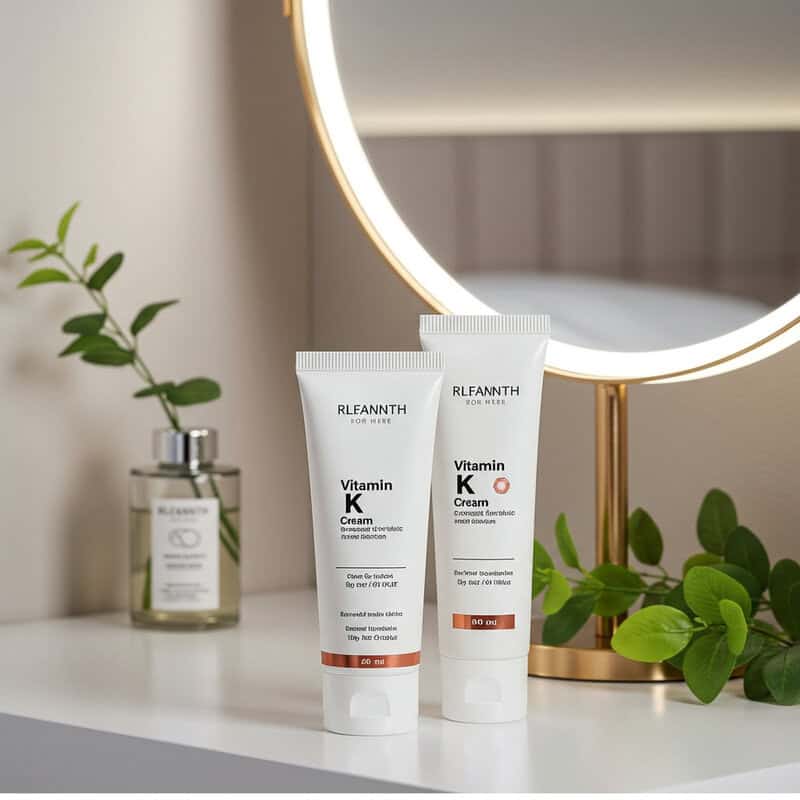
Vitamin K cream is valued for its unique ability to support blood clotting and reduce the appearance of bruising and discoloration, making it a beneficial option for under-eye bags and dark circles. By enhancing the body’s natural clotting processes, vitamin K can help minimize the pooling of blood and fluid in the delicate under-eye area, which often contributes to a tired or swollen appearance. This property is especially useful after cosmetic procedures or in individuals prone to broken capillaries (National Institutes of Health).
Compared to other topical vitamins, such as vitamin C (known for its antioxidant and brightening effects) and vitamin E (celebrated for skin healing), vitamin K’s specialty lies in reducing bruising and vascular-related discoloration. It is often included in formulas designed for post-procedural care or for those with persistent dark circles that have a vascular component, rather than solely pigmentation.
For best results, apply a small amount of vitamin K cream to clean, dry skin under the eyes, gently patting it in with your ring finger. Use once or twice daily as directed. Consistent application over several weeks is typically needed to see improvement. For more information, see the Healthline guide to vitamin K for skin.
44. Avoid Late-Night Meals

Eating late at night can significantly impact fluid retention and contribute to the development of under-eye bags. Consuming salty or heavy foods close to bedtime increases the likelihood of the body holding onto water, which can manifest as puffiness in the face and under the eyes upon waking. The digestive system also slows down during sleep, making it more difficult for the body to process and eliminate excess fluids efficiently (Sleep Foundation).
Comparing different meal timings, individuals who finish their last meal at least two to three hours before bedtime tend to experience less facial puffiness and better overall sleep quality than those who eat late. Early dinners allow the body ample time to digest food and balance fluid levels before rest, while late-night snacking—especially on processed or salty foods—can disrupt this process and exacerbate under-eye swelling.
For optimal results, aim to eat your final meal of the day by early evening and choose lighter, balanced options that are low in sodium and saturated fat. Avoid caffeinated beverages and heavy desserts at night. Establishing a consistent eating schedule supports both healthy digestion and a refreshed, less puffy appearance in the morning. For more tips, visit the CDC’s healthy eating guide.
45. Use Licorice Root Extract
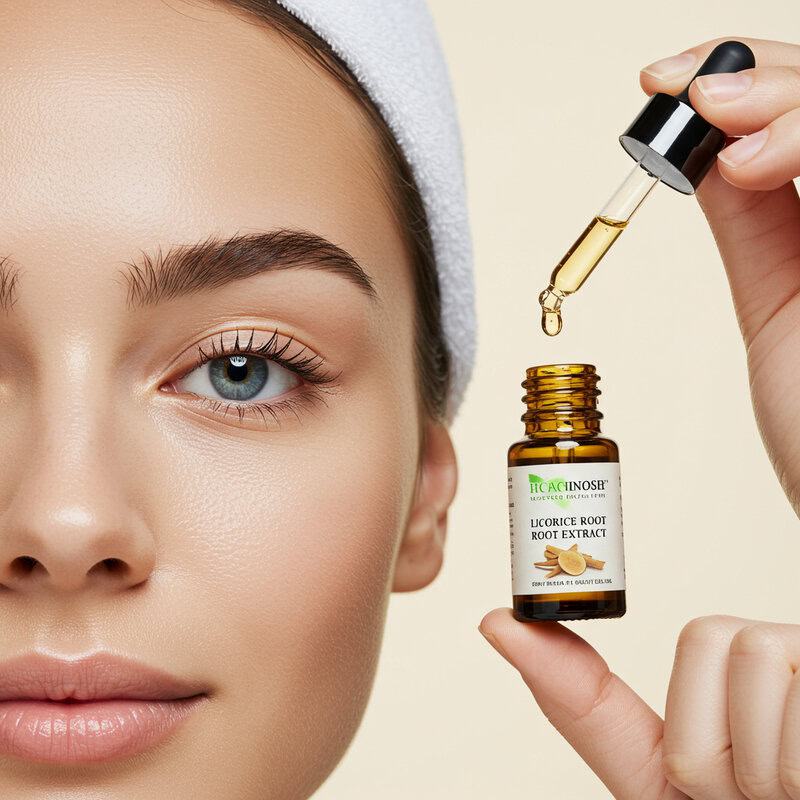
Licorice root extract is highly regarded for its anti-inflammatory and brightening properties, making it a valuable addition to under-eye skincare routines. The active compound glabridin helps inhibit the production of melanin, which can lighten dark circles and even out skin tone. In addition, licorice root contains antioxidants and anti-inflammatory agents that help soothe irritated skin and reduce puffiness, providing both immediate and long-term benefits (National Institutes of Health).
Compared to other herbal extracts, such as chamomile or green tea, licorice root stands out for its dual action on pigmentation and inflammation. While chamomile primarily calms and de-puffs, and green tea offers potent antioxidants and vasoconstriction, licorice root is uniquely effective at addressing both discoloration and swelling. This makes it especially suitable for those struggling with persistent dark circles alongside puffiness.
For safe usage, choose serums or creams with licorice root extract as a key ingredient, and apply a small amount to clean, dry under-eye skin. Use once or twice daily, and always patch test to check for sensitivity. Avoid using on broken or irritated skin, and consult a dermatologist if you experience redness or discomfort. For more on licorice root’s benefits, see this Healthline overview.
46. Monitor Medication Side Effects

Certain medications can contribute to under-eye puffiness as a side effect, due to their impact on fluid retention, blood vessel dilation, or inflammatory responses. Common drug classes linked to swelling include corticosteroids, antihypertensives (especially calcium channel blockers), nonsteroidal anti-inflammatory drugs (NSAIDs), and some antidepressants. These medications may cause the body to hold onto excess fluid, which often becomes most visible in the delicate under-eye area (Healthline).
For example, corticosteroids are well known for causing facial swelling and puffiness, particularly with long-term use. Calcium channel blockers, prescribed for high blood pressure, may lead to peripheral and facial edema as a side effect. NSAIDs like ibuprofen can promote fluid retention, while certain antidepressants may disrupt natural fluid balance or cause allergic reactions. The degree and persistence of puffiness can vary depending on the medication and individual sensitivity.
If you notice new or worsening under-eye swelling after starting a medication, review your prescriptions with a healthcare provider. Do not stop any medication abruptly without professional guidance. Your provider may suggest dosage adjustments, alternative drugs, or additional management strategies to minimize side effects. For more information, consult the MedlinePlus resource on medication side effects.
47. Try Coconut Oil Massage

Coconut oil is celebrated for its natural emollient effects, making it a soothing and nourishing option for under-eye care. Rich in fatty acids, vitamin E, and antioxidants, coconut oil helps to moisturize the delicate skin, reduce dryness, and support skin barrier repair. Its anti-inflammatory properties can also help calm irritation and may contribute to a subtle reduction in puffiness when used as part of a gentle massage routine (Healthline).
Compared to other oils like almond or jojoba oil, coconut oil has a richer, more occlusive texture, making it particularly effective for locking in moisture overnight. Almond oil is lighter and contains vitamin K, beneficial for dark circles, while jojoba oil closely mimics the skin’s natural sebum and is well suited for sensitive skin. Each oil offers unique benefits, but coconut oil’s combination of hydration and antioxidant support makes it stand out for nighttime use and gentle massage.
For a coconut oil massage, warm a small amount of virgin coconut oil between your fingertips. Gently tap and glide your ring fingers around the orbital bone, using light, circular motions for 1-2 minutes. Avoid direct contact with the eyes. Perform this massage before bedtime for best results. For more techniques, visit the Medical News Today guide.
48. Use Egg White Masks

Egg white masks are a classic home remedy believed to deliver a temporary tightening effect to the skin, making them useful for reducing the appearance of under-eye bags and puffiness. The proteins and albumin in egg whites help to lightly contract the skin when they dry, creating a subtle lifting sensation and a smoother appearance. This effect, while temporary, is favored by those seeking a quick refresh for tired-looking eyes (Healthline).
Compared to commercial firming masks, egg white masks offer a simple, natural alternative without added chemicals or synthetic fragrances. Many commercial products use peptides or polymers to tighten skin, providing longer-lasting results but at a higher cost and with potential for irritation. Egg whites, on the other hand, are gentle for most skin types and accessible for at-home use, though the effects are typically short-lived and best suited for special occasions or a quick pick-me-up.
To make a DIY egg white mask, separate one egg white from the yolk and whisk until frothy. Using a clean brush or fingertip, gently apply a thin layer under the eyes, avoiding contact with the eyes themselves. Let it dry for 10-15 minutes, then rinse with cool water. For more natural mask ideas, see this Medical News Today guide.
49. Maintain a Consistent Routine
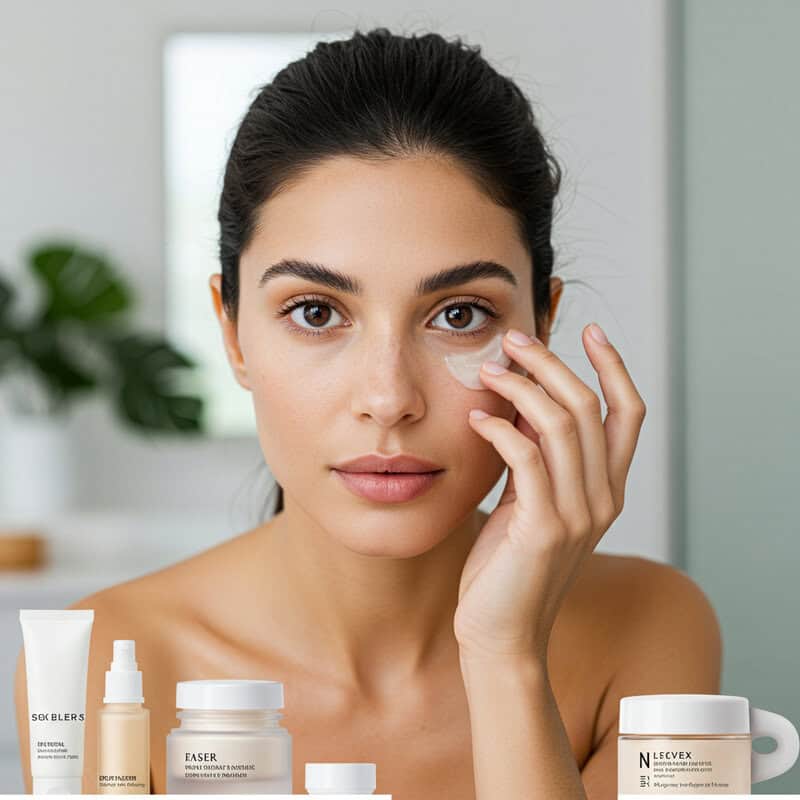
Consistency is key when it comes to managing under-eye bags and achieving noticeable, lasting improvements in skin health. Regular, daily care supports the natural renewal processes of the skin, enhances lymphatic drainage, and maximizes the benefits of topical treatments and lifestyle changes. In contrast, sporadic care—such as only using eye creams or remedies when puffiness is visible—often leads to inconsistent or minimal results (Healthline).
Comparing sporadic vs. regular care routines, those who maintain a morning and evening regimen experience smoother, more resilient skin and reduced under-eye swelling over time. Daily habits such as cleansing, gentle massage, hydration, and sun protection all add up to cumulative improvements. On the other hand, irregular application of products or sudden, drastic changes in care can stress the skin and prevent optimal results.
To help establish a routine, schedule skincare steps at the same times each day—such as after brushing your teeth or before bed. Use reminders or set alarms to reinforce new habits, and keep products visible and easily accessible. Tracking your routine in a journal or skincare app can further boost adherence. For more tips, visit the American Academy of Dermatology’s skincare routine guide.
50. Seek Professional Advice
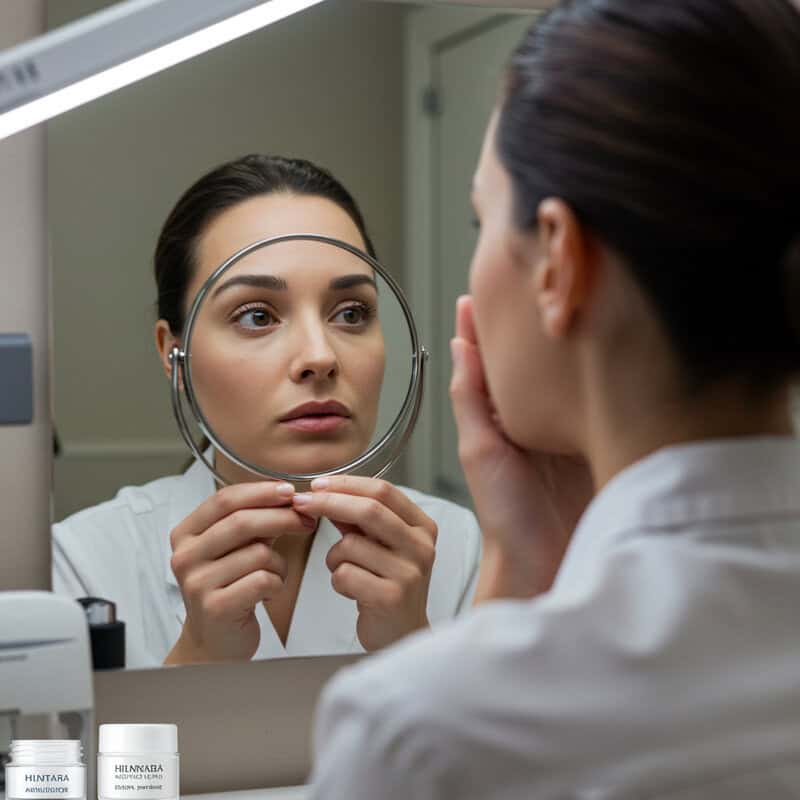
While many under-eye bags can be managed with at-home remedies and lifestyle changes, there are times when it’s important to consult a dermatologist or doctor. If you notice sudden, severe, or persistent swelling, discoloration, or pain around the eyes, or if home treatments do not yield improvement after several weeks, a medical evaluation is warranted to rule out underlying health concerns such as thyroid problems, allergies, or infections (American Academy of Dermatology).
Mild cases of under-eye bags often respond well to over-the-counter creams, cold compresses, and lifestyle adjustments. However, severe or chronic puffiness, or changes accompanied by other symptoms like vision changes or systemic illness, may require professional intervention. Dermatologists can assess the cause and recommend targeted solutions, while ophthalmologists can evaluate for eye-specific conditions.
Medical treatments for stubborn under-eye bags include prescription creams (such as retinoids), injectable fillers to restore lost volume, laser therapy for tightening and pigmentation, and surgical procedures like blepharoplasty. A specialist can help determine the most appropriate option based on your unique needs. For more information on when to seek help and available therapies, visit this Mayo Clinic page.
Conclusion
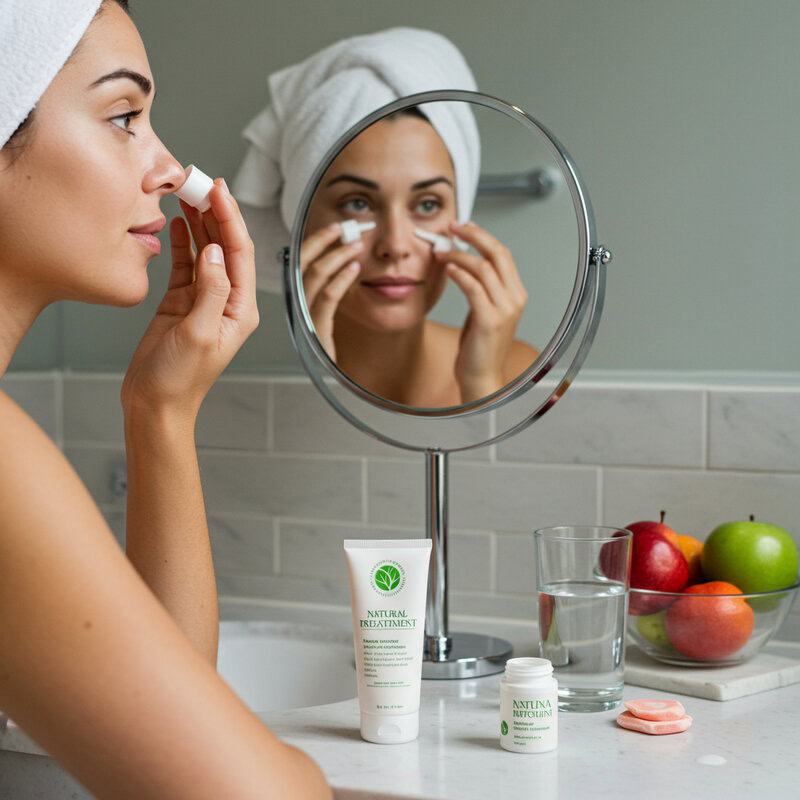
Addressing under-eye bags is not just about improving appearance—it can also serve as an early indicator of underlying health issues. Persistent puffiness may signal anything from lifestyle imbalances to medical conditions requiring professional attention. By adopting practical, evidence-based remedies and maintaining a consistent routine, you can reduce swelling and promote healthier skin. If home care does not yield results, or if symptoms worsen, seek a professional evaluation to ensure proper diagnosis and treatment (American Academy of Dermatology). Taking proactive steps today can enhance both your confidence and long-term well-being. For further information and personalized advice, consult a board-certified dermatologist or healthcare provider.
Disclaimer
The information provided in this article is for general informational purposes only. While we strive to keep the information up-to-date and correct, we make no representations or warranties of any kind, express or implied, about the completeness, accuracy, reliability, suitability, or availability with respect to the article or the information, products, services, or related graphics contained in the article for any purpose. Any reliance you place on such information is therefore strictly at your own risk.
In no event will we be liable for any loss or damage including without limitation, indirect or consequential loss or damage, or any loss or damage whatsoever arising from loss of data or profits arising out of, or in connection with, the use of this article.
Through this article you are able to link to other websites which are not under our control. We have no control over the nature, content, and availability of those sites. The inclusion of any links does not necessarily imply a recommendation or endorse the views expressed within them.
Every effort is made to keep the article up and running smoothly. However, we take no responsibility for, and will not be liable for, the article being temporarily unavailable due to technical issues beyond our control.




